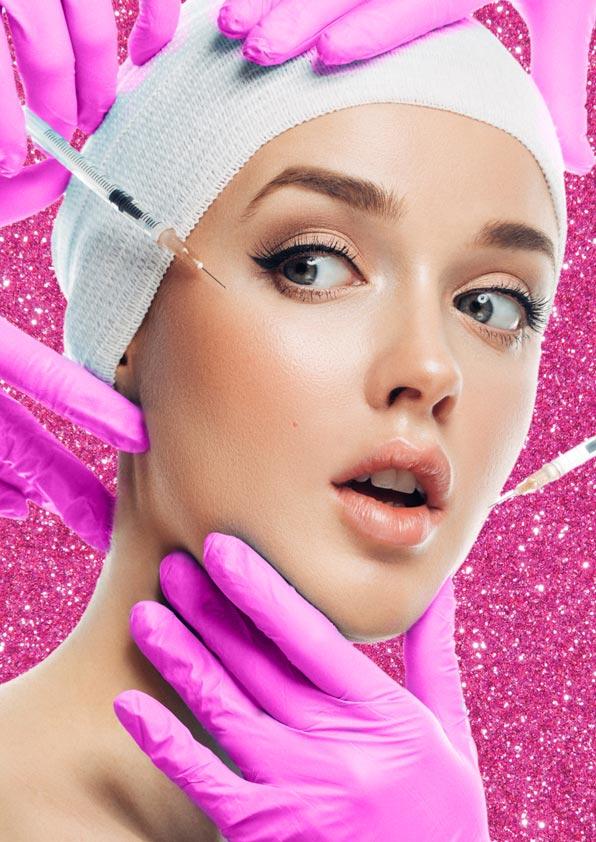

Journal of the Irish Dental Association Iris Cumainn Déadach na hÉireann JIDA Volume 69 Number 4 August/September 2023 New Dental Council Code regarding Non-Surgical Cosmetic Procedures Plastic fantastic?
Protection that puts you 昀rst dentalprotection.org/ireland Dental Protection Limited is registered in England (No. 2374160) and is a wholly owned subsidiary of The Medical Protection Society Limited (“MPS”) which is registered in England (No. 00036142). Both companies use ‘Dental Protection’ as a trading name and have their registered office at Level 19, The Shard, 32 London Bridge Street, London, SE1 9SG. Dental Protection Limited serves and supports the dental members of MPS with access to the full range of benefits of membership, which are all discretionary, and set out in MPS’s Memorandum and Articles of Association. MPS is not an insurance company. Dental Protection® is a registered trademark of MPS. Protection where you need it most Our Ireland team provides: • Dentolegal expertise • Regional knowledge backed by global expertise • Transparent membership advice • Free access to the Dental Complaints Resolution Service (DCRS) doorstep Dedicated experts n your 2201132919:06/22
HONORARY EDITOR
DEPUTY EDITOR
EDITORIAL BOARD


Dr Cristiane da Mata BDS MFD (RCSI) Dip TLHE MPH PhD journaleditor@irishdentalassoc.ie
Dr David McReynolds BA BDentSC MFDS RCSEd DChDent (Pros) FFD RCSI
Dr Meriem Abbas BDS (NUI) MFDS RCSEd
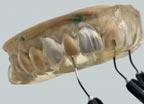
Dr Mirza Shahzad Baig BDS MSc (UK) PhD (TCD)
AnnMarie Bergin RDH
Dr Evelyn Crowley BDS (NUI) MSc (ULond) DDPHRCSEng MSc (TCD)
Dr Laura Kavanagh BDS Dip Clin Dent
Dr Geraldine McDermott BA BDentSc MFDS (RCSI)
PGradDip ConSed (TCD) MSc Healthcare Leadership (RCSI)
Dr Clair Nolan BDS (NUI) MSc (Endo) U. Lond
Dr Judith Phelan BDS (NUI) MDS (NUI) MSc (U Lond) MRD (RCS Eng and Glas)
Dr Catherine Vaughan BDS (NUI)
IDA PRESIDENT Dr Eamon Croke
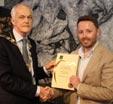
IDA CHIEF EXECUTIVE Fintan Hourihan CO-ORDINATOR Liz Dodd
The Journal of the Irish Dental Association is the official publication of the Irish Dental Association. The opinions expressed in the Journal are, however, those of the authors and cannot be construed as reflecting the Association’s views. The editor reserves the right to edit all copy submitted to the Journal. Publication of an advertisement or news item does not necessarily imply that the IDA agrees with or supports the claims therein. For advice to authors, please see: https://jida.scholasticahq.com/for-authors
Th!nk Media
Published on behalf of the IDA by Think Media, 537 NCR, Dublin 1 T: +353 1 856 1166 www.thinkmedia.ie
MANAGING EDITOR Ann-Marie Hardiman ann-marie@thinkmedia.ie EDITORIAL Colm Quinn colm@thinkmedia.ie Rebecca Pollard becky@thinkmedia.ie
ADVERTISING Paul O’Grady paul@thinkmedia.ie



Calum Petit calum@thinkmedia.ie
DESIGN/LAYOUT Rebecca Bohan, Tony Byrne, Meliosa Fitzgibbon
Audit issue January-December 2022: 3,906 circulation average per issue. Registered dentists in the Republic of Ireland and Northern Ireland.
Irish Dental Association Unit 2 Leopardstown Office Park, Sandyford, Dublin 18. Tel: +353 1 295 0072 Fax: +353 1 295 0092 www.dentist.ie Follow us on Facebook (Irish Dental Association) and Twitter (@IrishDentists).

CONTINUE TO RECEIVE THIS JOURNAL
IDA Members: FREE • Non-Members: €120/£100 per annum
Digital copies: FREE • email subscribe@irishdentalassoc.ie
CONTENTS Journal of the Irish Dental Association | August/September 2023: Vol 69 (4) 171 180 197 175 182 173 EDITORIAL Time to talk about Botox 175 ASSOCIATION NEWS 177 ADVOCACY AND CAMPAIGNS UPDATE A strong team to represent dentists 178 IDA NEWS Diary of events; Dental prize winners; Oral healthcare and HIV 181 BUSINESS NEWS All the latest news from the trade 182 BOOK REVIEW Weaving the threads of dental history 184 FEATURE Codes to work by 191 PRACTICE MANAGEMENT Taking the legal route 192 QUIZ 197 CLINICAL TIPS Injectable composites in modern practice 199 PEER-REVIEWED 199 Oral health and oral healthrelated quality of life in a homeless population in Ireland: a pilot study S. O’Dowling Keane, G. Quilligan, M. Harding 205 A retrospective study on the use of botulinum toxin as part of first-line management in the treatment of myogenous TMD J. Cheng, A. ElMinshawi, R. Courtney, T. Barry 210 COSTELLO AWARD 2023 212 NEW DENTAL SCIENCE 213 CLASSIFIEDS 218 MY IDA Dr Gabrielle O’Donoghue 193 MEMBERS’ NEWS 4 Pre-Budget Submission 2024 4IDA at the Oireachtas
MEMBERS ONLY
MEMBER 2023
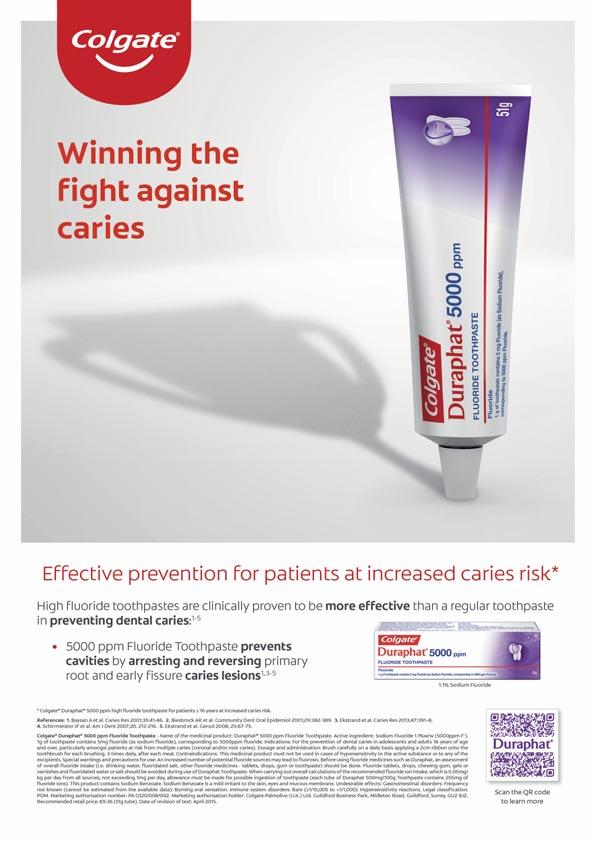 Dr Cristiane da Mata Honorary Editor
Dr Cristiane da Mata Honorary Editor

Time to talk about Botox
With a new Dental Council Code issued recently, perhaps it’s time for a discussion about cosmetic dentistry.
The summer is passing more quickly than I would have liked and in between summer camp drops-offs and collections, cooking dinner, hosting play dates, and cleaning, while still working, I keep thinking of something interesting and relevant to write for this editorial. The lack of sunshine means that I often see myself sitting, facing a blank page on my computer screen, looking for inspiration, which is nowhere to be found… I browse the internet constantly for ideas, reading the news, searching for anything dental related in the media, and dental aesthetics/cosmetic dentistry seem to be a recurrent theme. Added to that is the fact that the Dental Council of Ireland has recently issued the Code of Practice regarding Non-Surgical Cosmetic Procedures. So, I feel it is time to talk about Botox.
The rise in cosmetic dentistry
Dentists have been working to improve patients’ smiles and the shape of their teeth probably for as long as dentistry has existed; after all: “One of the main goals of dental treatment is to mimic teeth and design smiles in a most natural and aesthetic manner, based on the individual and specific needs of the patient”.1 While keeping the dentition functional, of course. Pierre Fauchard (1678-1761), the father of modern dentistry, in his work Le chirurgien dentiste, ou Traité des dents lists on the title page ways to keep teeth clean and healthy, followed immediately by means to embellish them, even prior to restoration of lost teeth and cures for dental diseases. Another ancient example of the aesthetic role of teeth is seen in Easy care for cleanliness of the mouth and for preservation of the teeth by Etienne Bourdet (1722-1789), where he speaks about the teeth as “a natural ornament inseparable from beauty”.2
Even though dentists have been helping patients to improve their smile for centuries, the evolution of techniques and dental materials has raised the bar for the kind of cosmetic results that can be achieved. From digital smile design to tooth whitening, bonding techniques and orthodontics, we now have a huge array of techniques at our disposal to deliver the best outcomes. Moreover, social media has had a tremendous impact on patients’ demand for aesthetic dental procedures and their expectations for perfect results. Needless to say, dentists must be very careful when dealing with these patients, who may bring unreasonable expectations and even present with disorders such as body dysmorphia. For these patients, no result will ever be satisfactory enough (ethics and caution when attending to these needs are topics for another editorial…).
Now facial aesthetics has been added to the list of concerns brought to dentists by their patients. In a society obsessed with looking young, the demand for nonsurgical cosmetic procedures has been growing exponentially, together with aesthetic dental treatment. This has all been exacerbated by the post-pandemic
‘Zoom boom’ effect, where people working remotely became very aware of their facial appearance from gazing at their own image on a computer screen for prolonged periods. Fine lines and wrinkles are bothering people more than ever. Botulinum toxin, popularly known as Botox, is a neurotoxin that has been used for the last decades as a muscle relaxant. Botox can also be used to temporarily reduce the appearance of fine facial lines and wrinkles. In dentistry, Botox has been suggested as an option to treat TMJ problems, gummy smile, masseteric hypertrophy, and asymmetric smile. This edition includes a fantastic peer-reviewed article on the use of botulinum toxin for the treatment of myogenous temporomandibular disorders (page 205), which I commend you to read.
Because of the area dentists work on (mouth/face), their knowledge of facial anatomy and their good eye for aesthetics, many professionals are now undertaking non-surgical cosmetic procedures such as Botox and dermal fillers. While much controversy exists as to whether or not dentists should be the professionals delivering facial rejuvenating treatments, the number of dentists offering Botox in their practices is increasing rapidly. Responding to this phenomenon, the Dental Council of Ireland recently issued its Code of Practice regarding Non-Surgical Cosmetic Procedures, recognising that these are within the remit of dentistry. The ultimate aim is to ensure patient safety and keep the high standards expected within the profession.
The publication of the Code is, without a doubt, a positive step forward and I hope that it will elicit some important discussions around the theme. Many questions still remain, so I hope that the Dental Council can provide more detailed guidance in the future, similar to what it has done concerning conscious sedation and medical emergencies.

References
1. Blatz MB, Chiche G, Bahat O, Roblee R, Coachman C, Heymann HO. Evolution of aesthetic dentistry. J Dent Res. 2019;98(12):1294-1304.
2. Seiler R, Galassi FM, Rühli F, Eppenberger P. 2018. Aesthetic dentistry in the 18th century: when beauty counted more than health. Annals of Dentistry and Oral Disorders 2018;1(1):109.
173
EDITORIAL Journal of the Irish Dental Association | August/September 2023: Vol 69 (4)
“Social media has had a tremendous impact on patients’ demand for aesthetic dental procedures and their expectations for perfect results.”
WHITENINGALIGNMENT

COMPOSITE STRIPS



GIVE YOUR PATIENTS THE SMILE THEY DESERVE WITH A CONFIDENT A SMILE MAKEOVER
Offering the Confident Smile Makeover package enables patients to achieve a stunning smile in one treatment process. Allowing your costs to be reduced, increasing potential revenue to the practice.
DISCOVER A
MAXIMISE YOUR SMILE MAKEOVER WORKFLOW





RE FRESH RE NEW
++=
RE
FOR FURTHER INFORMATION PLEASE CONTACT: T: 01 4565288 E: iesales@henryschein.ie
VITALISE RE VEAL
Dr Eamon Croke IDA President

Ruling by fooling
It’s past time for honest engagement from the Minister and the Department on dentistry and oral health.
“Yes, ruling by fooling, is a great British art – with great Irish fools to practice on”.
In 1914, in the Irish Worker newspaper, James Connolly expressed his frustration with the offers by the British Government on Home Rule in the hope of securing Nationalist volunteers for its cause in the First World War, which was only some weeks old. Connolly held that it had “been a carefully staged pantomime to fool”. This is not a dark art practised in a bygone day but, rather, it is alive and well. Weariness was in Deputy Sean Crowe’s voice in his use of the phrase ‘ruling by fooling’ during his summation, as Cathaoirleach of the Joint Committee on Health, after the meeting with the Irish Dental Association. He was making the point that it does not make sense to make announcements, in this case on health services, without engaging the stakeholders. Such announcements raise the expectations of the public, who expect the services but cannot get them. Ultimately, the Cathaoirleach mused, people see through it.
Joint Committee on Health
An Irish Dental Association delegation that included Dr Caroline Robins (Past President), Dr Will Rymer (GP Committee Chair), Mr Fintan Hourihan (CEO), Ms Roisin Farrelly (Manager, Communications and Advisory Services) and myself, was invited to meet the Joint Committee on Health on July 5, 2023. Striding beyond the Kildare Street entrance, admittedly not Oceans 11 but with purpose, we headed north of the former ducal palace to Leinster House 2000, which houses the committee rooms.
After you collect your ID badge, you wait. The new extension has a light-filled vestibule perfect for people spotting. I had been in this position before but the anticipation of meeting the Committee is always new. New faces, new agenda, new challenges. Coffee consumed, copious notes, numerous Q&As rehearsed –you hope you are ready. And then you get the call.
I believe I speak for the delegation when I say that the Committee members, who come and go throughout the sitting, were well briefed and business-like, but courteous. Their questions were candid and inquisitive, requiring straight, authoritative responses.
All the hot topics were assiduously examined. We explained the workforce crisis and debated possible solutions. The Committee members were particularly interested in what additional capacity could be generated in our two dental schools for school leavers who might become dental healthcare professionals in Ireland. The lack of specialties in the dental workforce was unacceptable to the members.
Inevitably, the members enquired about solutions to the impasse with the Dental Treatment Services Scheme and the drain of dental contractors from therein. The

plights of primary school children not being seen, as is required of the HSE, and those at the wrong end of dental tourism, were given flesh and bones by Caroline and Will.
What of the talks that the Minister had told the Cathaoirleach about, in a reply to a parliamentary question (Q.781, March 1, 2022): how were they progressing? Fintan truthfully answered that the last meaningful talks were in 2008 and the Department of Health had walked out of them. Nobody wants to feel hoodwinked.
Careless words
“The diplomat holds all acts honourable which bring him success.” (James Connolly, Workers’ Republic, 1915)
Is there nothing new under the sun? We have all grown accustomed to the widespread use of misinformation, mistruths and plain lies for political gain in recent years.
In a six-month spell between November 2022 and April 2023, Minister Donnelly has responded to nine parliamentary questions about his interactions with the IDA in which he inaccurately implied the substance of recent meetings with the Association. Perhaps Minister Donnelly is at the mercy of the Department of Health and its hollow ‘cut and paste’ replies. On March 1, 2023, Taoiseach Leo Varadkar repeated the misconception of active discussions with the Association. Micheál Martin, then Taoiseach, fell foul of the same production line in replying to a parliamentary question on November 10, 2021.
When leaders mislead their parliamentary colleagues and the public, inadvertently or otherwise, there is a serious problem. While careless word games play out, the most vulnerable suffer. Enough is enough. It’s time for honest engagement.
Journal of the Irish Dental Association | August/September 2023: Vol 69 (4) 175 PRESIDENT’S NEWS
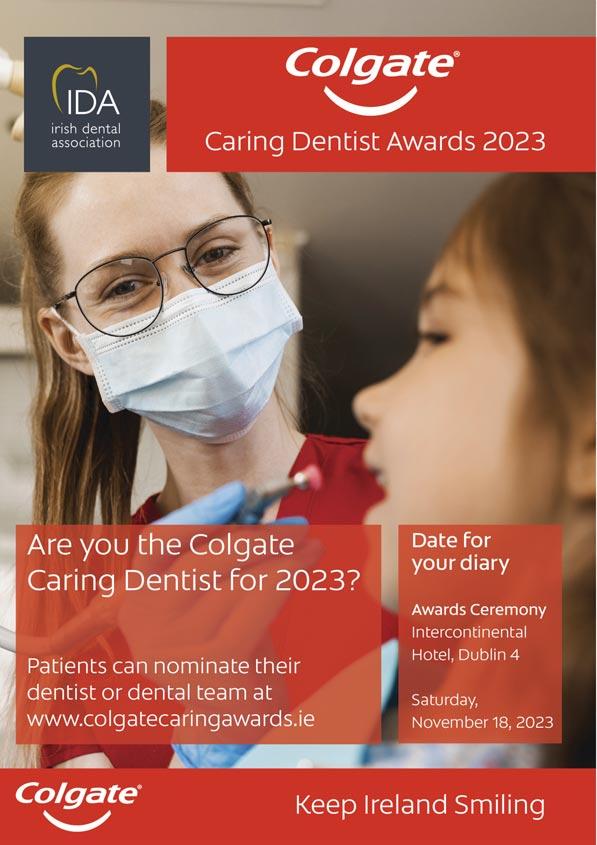 Fintan Hourihan IDA CEO
Fintan Hourihan IDA CEO

A strong team to represent dentists
Yet again, the Association has been extremely busy in representing members in recent weeks.
Oireachtas Health Committee
The highlight of our recent work was the invitation to address the Oireachtas Health Committee, which arrived the day after we had IDA representatives commenting on the airwaves about the new proposals for extra dental school places.
The Oireachtas hearing gave us the opportunity to emphasise that the greatest contribution that could be made by the Minister for Higher Education, Simon Harris TD, would be to properly fund the dental schools so that they are not as reliant on admitting overseas students, who pay annual fees of over ¤50,000, which has the effect of displacing opportunities for Irish school leavers and EU candidates in the first instance. This ultimately leads to reduced numbers of dentists likely to commence practice in Ireland.
The Oireachtas hearing was very wide ranging and covered issues of concern to the profession, including the impact of cutbacks on the school screening service, the need to allow greater recognition of specialties in dentistry, the need to have urgent talks on a replacement for the medical card scheme, and the need to address the many issues that make working in dentistry – whether as a dentist, nurse or hygienist – particularly problematic.
The hearing was a successful opportunity for the Association, which ultimately reflected the fact that a very strong team attended on our behalf. The contributions by my colleagues Drs Eamon Croke, Caroline Robins and Will Rymer were particularly telling as they allowed the politicians to get a very human understanding of the impact of the many problems facing Irish dentistry on patients, about whom the politicians are ultimately most concerned. We have a number of follow-on actions arising from the hearing and again this will be a priority for the Association as part of its ongoing representative work. A consequence of the hearing was the media blitz, which saw many interviews on local and national broadcasting stations and where we had a chance to amplify our messages.
The next significant opportunity will come with the publication of our preBudget submission, further details of which can be read in our members’ news pages in this edition.
Further talks
The Association has also been invited by the Department of Enterprise, Trade and Employment to participate in a consultation exercise on work permits. In this instance, the value of the many surveys we have undertaken among our members in recent times comes to the fore most prominently. We need raw data to illustrate the nature and extent of the problem of shortages of dental staff and indeed team members across the country.
The Oireachtas hearing also gave us the opportunity to emphasise that new legislation is not required to allow formal recognition of many dental
specialties. All it takes is for the Minister for Health, at the stroke of a pen, to allow formal recognition of the specialties, which will have many beneficial consequences for the general public, who could more clearly recognise the appropriate experts in different fields of dental specialisation, and also help with the recruitment of specialists within the public service as appropriate.
Talks at the Workplace Relations Commission (WRC) on behalf of members working as public dental surgeons in the HSE have produced some movement as regards our ongoing discussions around CPD, sessional work, staffing and reporting relationships, and further direct talks are to take place in September. We also had a further meeting with the Department of Social Protection with regard to the review of fees for the Dental Treatment Benefit Scheme for contract holders. Again, the talks are very much a team effort, with a strong delegation of dentists joining to illustrate the consequence of the delays in the fees review.
We can only anticipate participation in wider public service pay talks in the autumn.
Practice matters
Finally, we will shortly be circulating a ‘Frequently Asked Questions’ document for dentists who are considering the engagement of associates as practice owners, or indeed dentists who wish to work as an associate.
There are so many ways in which the Association has been visibly representing members at different talks and in different fora. Coming down the road we are concerned that the Department of Health may seek to impose a business model on dentistry based on the medical GP model, and seek to interfere to a far greater extent in the running of dental practices. This cannot be allowed to happen and we need a strong representative body to defend and advocate for the interests of dentists.
That is why membership of the IDA is so important. We need a strong membership body that fearlessly represents dentists. So if you are not a member, please join the Association and help us to represent dentists from a position of strength and unity.
Journal of the Irish Dental Association | August/September 2023: Vol 69 (4) 177 ADVOCACY AND CAMPAIGNS UPDATE
“The Oireachtas hearing also gave us the opportunity to emphasise that new legislation is not required to allow formal recognition of many dental specialties.”
HSE Dental Surgeons Seminar returns to Portlaoise

The Annual HSE Seminar returns to the Midlands Park Hotel, Portlaoise, on Thursday and Friday, October 12 and 13.
This event is an ideal opportunity for those working in the HSE dental service to meet with colleagues and friends, and gain relevant CPD/education over the two days. An excellent line-up of speakers has been arranged and we hope for a great turnout of those employed in the HSE dental service, including team members.
To book the hotel at ¤124 for a single room, and ¤154 for a twin/double room, please call the hotel directly on 057-867 8588, quoting IDA seminar 2023. Please book before August 31.
CPD/education autumn programme
The CPD/education programme will recommence in early September. The IDA will continue with our webinars from September – our first webinar will be in conjunction with Mouth Cancer Awareness Day on Wednesday, September 20. Webinars will continue on the last Wednesday of the month at 8.00pm, and the majority will be available to watch afterwards from our CPD library.
Annual Conference 2024





2024 sees us return to the Kingdom and the beautiful town of Killarney from April 25-27. The Great Southern Hotel will be the venue for our three-day event. This year we are delighted to partner with the American Association of Fixed Prosthodontics (AAFP) to bring you even more outstanding speakers and topics.
Our pre-Conference day will take place on Thursday, April 25, with hands-on courses in endodontics, composites, prep design, facial aesthetics, ICON (tooth whitening), and sedation. We will also have a pre-Conference course designed specifically for dental hygienists. All the usual fun and social events will be included in the three days, including golf at Killeen golf course, a trip to Killarney Brewery, and our annual dinner on Friday evening. Make sure to put the conference in your diary today – April 25-27, 2024.
Dates for your diary
Friday, September 15
Wellness Day with Gerry Hussey, Seafield Resort, Ballymoney, Co. Wexford
Friday and Saturday, September 22 and 23
Anterior composite hands-on course with Dr Andrew Chandrapal, Wineport Lodge, Glasson, Co. Westmeath
Friday, September 29
Prep design hands-on course with Dr Maurice Fitzgerald, prosthodontist, Dublin, venue to be confirmed
Thursday and Friday, October 12 and 13
HSE Dental Surgeons Seminar, Midlands Park Hotel, Portlaoise
Friday, November 10
Paediatric day of lectures and workshops in association with the European Academy of Paedatric Dentistry (EAPD) Dublin, venue to be confirmed
Friday, November 17
Endodontic hands-on course with Dr Richard Flynn, endodontist The Europe Hotel, Killarney, Co. Kerry
Saturday, November 18
Colgate Caring Dentist Awards, InterContinental Hotel, Dublin
To book these events, go to www.dentist.ie and click on BOOK CPD. For any queries, please contact aoife@irishdentalassoc.ie.
178 Journal of the Irish Dental Association | August/September 2023: Vol 69 (4) NEWS
MedAccount offer a full range of specialist dental accounting support and advisory services for Associates, Principals, Expense Sharing Partners and Hygienists. MedAccount Services S20, The Pottery, Pottery Road, Dun Laoghaire, Co. Dublin. Tel: 01 280 6414 Email: info@medaccount.ie Will you still be smiling at the end of the year? Make sure your practice is profitable in 2023 As Ireland’s only specialist dental accountants we’re here to help you control your practice costs QUARTERLY ACCOUNTS PAYROLL SERVICES TAX CONSULTANCY COST OF TREATMENT FIRST CONSULTATION FREE First consultation FREE OF CHARGE with no obligation to engage
Can you contribute to our Journal Editorial Board?
Expressions of interest are sought for membership of the Editorial Board of the Journal of the Irish Dental Association
As publishers of Ireland’s leading peer-reviewed dental journal, we are keen to receive applications from IDA members in all areas of practice, but especially HSE dentists, paediatric dentists, and specialists in the areas of oral surgery and orthodontics.
Candidates are asked to submit a cover letter outlining their background, areas of interest, and an indication of how they can contribute to our team. Shortlisting and interviews may be arranged. Under the stewardship of our Honorary Editor, Dr Cristiane da Mata, the Editorial Board meets three times a year to agree content for the following editions and discuss Journal development.
If you would like more information on the role and commitment involved, please contact Liz Dodd at liz@irishdentalassoc.ie.
Access to oral healthcare for people living with HIV
Despite significant advances in HIV treatment, many people living with HIV continue to experience stigma in accessing healthcare services. This includes access to oral healthcare. Stigma can take many forms, and often stems from outdated knowledge, myths and misconceptions around HIV, HIV treatment and transmission risks.
HIV Ireland, in collaboration with the Irish Dental Association, people living with HIV and oral health practitioners, are undertaking a 12-month project to ascertain patient and practitioner experiences. The findings will inform the development of educational tools to promote optimum care and health outcomes for people living with HIV.
We want to hear from you
The first phase of this project will include a short survey followed by focus groups with oral health practitioners and people living with HIV. Information gathered as part of this phase will inform the development of a supplementary elearning course designed specifically for students and practitioners. Further information will be disseminated through the Irish Dental Association, the HIV Ireland website, and social media in the coming weeks.
Colgate Caring Dentist Awards 2023
On Saturday, November 18, Dublin’s InterContinental Hotel is the place to be for the Colgate Awards 2023. Don’t miss this spectacular event where we celebrate everything good and positive about the dental profession. Why not spoil your dental team members and treat them to a night in this stunning five-star venue?
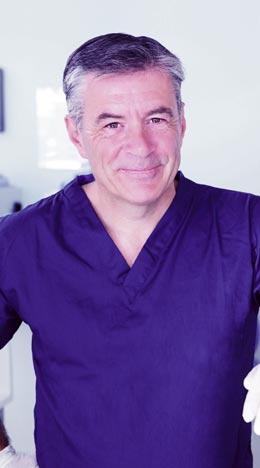
Make sure to display your posters in your practice and post your social media postings sent from the IDA to all practices.
Put the date in your diary now – Saturday, November 18, InterContinental Hotel, Dublin.
See you all there!
Journal of the Irish Dental Association | August/September 2023: Vol 69 (4) 179 NEWS
to see a better future for dentistry in Ireland?
Want
Prizewinners


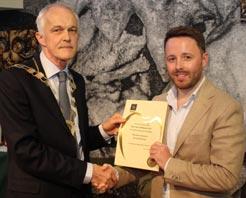
22 Tralee Road, Castleisland, Co. Kerry V92 AF82
T: +353 (0)66 714 3964 M: +353 (0)87 332 4779
E: infodentanet@gmail.com www.dentanet.ie
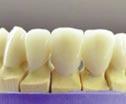
NEWS 180 Journal of the Irish Dental Association | August/September 2023: Vol 69 (4)
Oisín McDonnell (right) receiving the Irish Dental Association award for achieving the highest mark in the final year BDS at Cork University Dental School from IDA President Dr Eamon Croke.
From left: IDA President Dr Eamon Croke; Harumi Oshima; and, Prof. Blánaid Daly, Dean of Dental Affairs and Head of School, School of Dental Science, TCD. Harumi received the IDA prize for best year three academic presentation.
DENTANET DENTAL LABORATORY SERVICE
From left: IDA President Dr Eamon Croke; Brian Maloney; and, Prof. Blánaid Daly, Dean of Dental Affairs and Head of School, School of Dental Science, TCD. Brian achieved the IDA prize for the highest result over the five years of the BDS course.
TURNAROUND HIGH AESTHETICS SUPERIOR QUALITY
QUICK
Coltene dental dams and other offerings
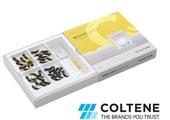
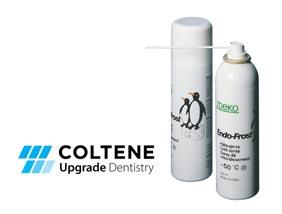

Coltene asks that when undertaking restorative procedures, dentists consider using a HySolate dental dam, which the company states offers enhanced visibility and reduced risk to the patient.
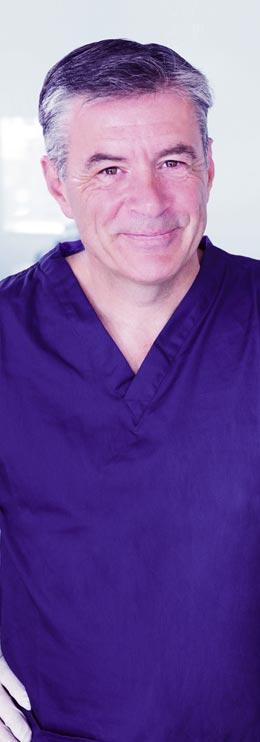
According to Coltene, the HySolate range is low protein and powder free. The dental dams are available in a variety of shades and scents, including the HySolate Black Edition, which the company states provides ultimate clear contrast, improving visibility and clinical photographs. Additionally, the company notes that HySolate Black Edition dental dams are pre-printed with the dental arch, saving working steps for the clinician.
According to Coltene, its Brilliant Crios is a reinforced composite that is designed with the same physical characteristics as the natural tooth to allow a tooth-like wear rate.
The company states that Brilliant Crios is an excellent alternative to ceramic and zirconia crown materials. According to Coltene, the material combines the advantages of an innovative submicron hybrid composite material with those of a CAD/CAM fabrication process, and that this offers reliable, aesthetic, and fast restorations without the need for a separate firing process.

Dr Rajiv Ruwala is a principal dentist, practice owner and educator. He states that he regularly uses Coltene’s Brilliant EverGlow, a universal submicron hybrid composite, and says: “Brilliant EverGlow from Coltene is a superb composite. It has excellent handling and does not slump, but most importantly it is easy to polish and in my opinion the composite most resistant to all types of staining. It is my go-to composite when patients have high-staining diets”.
Also available from the company is Roeko Endo-Frost, which Coltene states is an effective pulp vitality testing spray, which, when applied to a cotton pellet, will stimulate the nerve endings in the pulp, inducing a response in vital teeth. The product has a temperature of -50oC.
A brilliant smile
Journal of the Irish Dental Association | August/September 2023: Vol 69 (4) 181 BUSINESS NEWS Join today at www.dentist.ie Or contact Aoife Moran, Membership Manager, by email at amoran@irishdentalassoc.ie or by telephone on 01 2950072. Or scan here We’re here to promote a brighter future. Your union for your profession
Weaving the threads of dental history
The Irish Dental Association: A centenary history, tells the story of the Association and its links and interweavings with the politics and society of the last one hundred years.
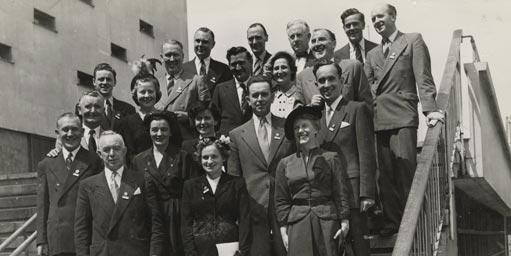
A good friend and colleague has a consuming interest for all things sewing related. She talks passionately about it and, as with anyone holding such an interest and knowledge, effortlessly folds the erstwhile listener into her enthusiasm. One day, extolling the virtues of tapestry, she hit on what I have
always thought to be a wonderful metaphor. “Look at the front-facing image,” she chirped. “Doubtless it will be a charming landscape, a portrait or a tableaux in glorious multicolours. Now, if the opportunity arises, look at the reverse side. It will be an unaesthetic jumble of threads, knots, seemingly random cross cords and twines. It represents the nightmare of circumstance distilled by the weaver in order to calm the observer into an apparently meaningful view of reality. That,” she concluded with admirable panache “is history”.
Stephen Hancocks Editor-in-Chief, BDJ
This centenary celebratory book mirrors the metaphor perfectly, portraying a historical landscape of the development of the IDA for the reader to enjoy and visualise by a skilful weaving of otherwise scattered threads. The two authors have diligently sewn together references, facts, photographs, memories and recollections to create a smooth narrative, which blends what might otherwise be merely a series of significant dates and events into a description with a vital human backdrop. This is perhaps best evidenced by the chapter wittily entitled ‘Operatory Lights’, which provides vignettes of some of the stories and personalities that the authors encountered in their research. Such insights give the reader even more of a sense of the march of the Association, which has been guided by the energy and enthusiasms of individuals committed to the art and science of dentistry. My knowledge of history is wanting in various respects and so I admit to being surprised that the IDA roots grew from it being a branch of the British Dental Association in 1887, seceding to independence on amicable terms in 1922. Acknowledging these early beginnings, the book details this period as the precursor to the date of the official launch of the IDA. In this regard it notes that

182 Journal of the Irish Dental Association | August/September 2023: Vol 69 (4) BOOK REVIEW
“The authors have diligently sewn together references, facts, photographs, memories and recollections to create a smooth narrative.”
From The Irish Dental Association: A centenary history, members of the Irish delegation attending the FDI congress in London, 1952.
the decision to create an independent Irish association with a jurisdiction identical to the Irish Free State marked dentistry as unique among medical professions in the new state. Indeed, one of the strengths of the book is its ability to identify changes in politics and society, and link these with developments by and within the IDA as either anticipatory moves, or reactions, to the shifting landscape. It is also pleasing to read, and be reminded, of the co-operation and collaboration between the IDA and the BDA over the last century through connections with the BDA’s headquarters and the Northern Ireland Branch. What seeps through the narrative is the very real sense that dental professionals have been willing and able to negotiate around, set aside or at least respect and agree to differ on personal and national political differences in order to protect patient oral health and professional well-being.
The history of many dental associations, societies and groups follows similar
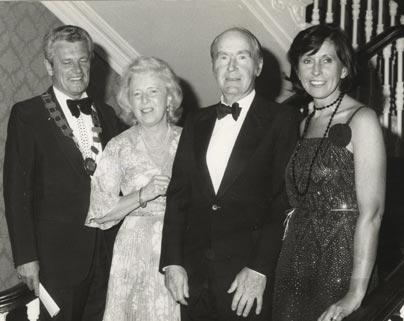
patterns. This is not unexpected since the motivation behind the initial impetus to come together focuses around points of commonality – ways in which to enhance scientific and practical knowledge, patient care and the pleasures of shared social occasions. In this it is both pleasing and reassuring that the formation and development of the IDA, as detailed here, has followed similar lines. Indeed, it helps to illuminate why, to this day, dental meetings, conferences and congresses continue to include receptions, dinners and sometimes golf tournaments in their programmes. The balance of these and their mode have doubtless been modified over the years and this will unquestionably continue in a world increasingly cognisant of equality, diversity and inclusion. Life, for example, has moved on since the 1897 BDA AGM held in Dublin included a ‘smoking concert’.
As a tapestry of IDA history this very readable hardback book, presented in an appropriately comfortable-to-handle form (I always ‘feel’ a good book should possess such a tactile quality) provides a valuable record of times past. But also, permits a fascinating peak behind the picture of the cross-threaded tangle of human endeavour. Although, and I’m guessing here, there probably won’t be another centenary volume for at least 100 more years, so I urge you not to procrastinate in getting a copy and reading it. Congratulations to Eoin Kinsella and Frances Nolan for a very engaging read.
The Irish Dental Association: A centenary history can be purchased from https://wordwellbooks.com/index.php?route=product/product&product _id=2054.

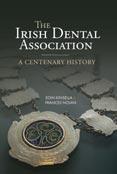
Journal of the Irish Dental Association | August/September 2023: Vol 69 (4) 183
“As a tapestry of IDA history this very readable hardback book, presented in an appropriately comfortable-tohandle form, provides a valuable record of times past.”
BOOK REVIEW
Above left: The Irish Dental Association: A centenary history. Left: The cover of the March-April 1972 issue of the JIDA, published during the Association’s golden jubilee year (courtesy of Conor McAlister). Above (from left): Norman Butler (IDA president); Maeve Hillery; Patrick Hillery (President of Ireland); and, Ursula Butler, at the Association’s annual dinner, May 5, 1984.
Codes to work by
The Dental Council recently released, among others, its Code of Practice regarding Non-Surgical Cosmetic Procedures, which acknowledges these procedures as the practice of dentistry for the first time.
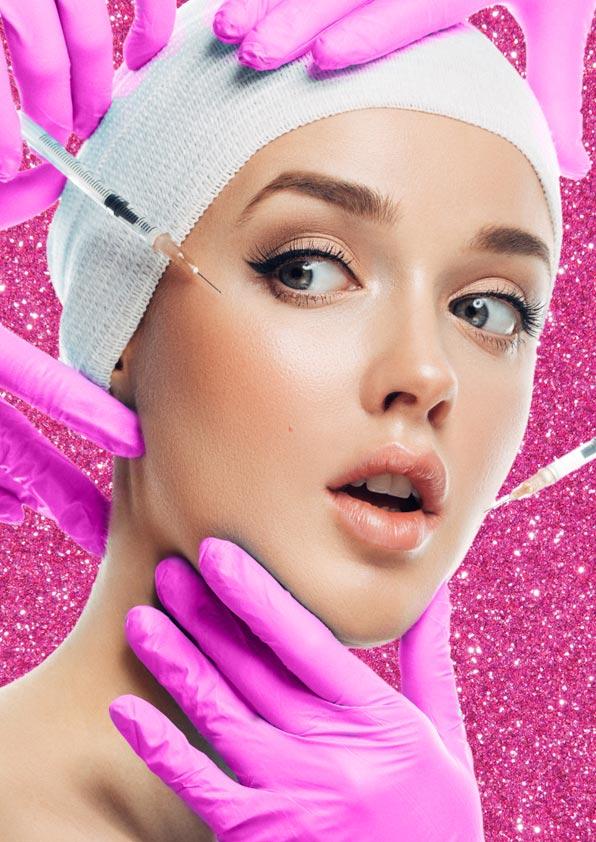
184 Journal of the Irish Dental Association | August/September 2023: Vol 69 (4) FEATURE
The number of dentists performing non-surgical cosmetic procedures, such as anti-wrinkle injections (Botox and similar products), and lip fillers (many products) has increased substantially. There are some dentists who have moved into this area full time (see panel 1), while many dentists include this work as a supplement to their clinical practice.

In light of this, the Dental Council of Ireland has released its new Code of Practice regarding Non-Surgical Cosmetic Procedures, along with two other codes: the Code of Practice regarding Medical Emergencies and the Code of Practice regarding Dental Conscious Sedation (see panel 2).
The letter accompanying the publication of the Code of Practice regarding Non-Surgical Cosmetic Procedures includes the statement (for the first time by the Dental Council) that these procedures are within the practice of dentistry. This is a major development in an area that is suffering from a dearth of regulation. This Code has received a broad welcome, as all stakeholders agree that guidance is lacking in the area. Dentists who do not fulfil what is outlined in the Code may face fitness to practise proceedings. Non-surgical cosmetic procedures are often thought of as just anti-wrinkle injections and fillers, but can also include collagen replacement therapy, wrinkle reduction techniques, dermabrasion and laser treatments, and chemical peels on the face, among others.
While it is welcome, the publication of the Code raises further questions.
Updating the position
The previous code on cosmetic procedures dates back to 2013, and stated that non-surgical cosmetic procedures were not the practice of dentistry. Dr Gerry Cleary, President of the Dental Council, explains that the Council reached the conclusion that this position was untenable: “The previous Code, which did set out a comprehensive framework for decision-making to the dentist providing non-surgical cosmetic procedures, has been largely retained. However, it also contained an element of contradiction whereby the Council said that these procedures are not the practice of dentistry, but on the other hand … [here’s] what you must do if you provide these treatments, and we will hold you accountable for failures”.
IDA President Dr Eamon Croke, who was President of the Dental Council when the 2013 Code was published, says that the new Code is an abridged form of the previous one, removing reference to the valuable use of certain ‘cosmetic injectables’ in the delivery of healthcare and the reference to the practice of dentistry. That cosmetic treatments are now considered the practice of dentistry is mentioned only in the cover letter.
Eamon says both the previous and latest Codes are “about ensuring overall patient safety across your own competency, understanding the materials that you're using, and ensuring that the patient has given consent having been given the required information, including cost”.
Both Codes inform dentists that failure to comply with the Codes may lead to fitness to practise proceedings.
Dr Mairead Browne completed a Master’s in Facial Aesthetics at Queen Mary University of London, and works in non-surgical cosmetic procedures two days a week alongside her general practice as a dentist: “As dentists, we deal with cosmetics and aesthetics all the time, so the Code is recognising that and it's reflective of that current landscape because this is an area that is growing exponentially … it's setting those obligations for dentists, specifically carrying out the anti-wrinkle injections and dermal fillers”.
It is hardly a surprise that dentists are moving into this area, says Mairead: “We as dentists do extensive training at an undergraduate level in things like anatomy, pharmacology, injection techniques. We deal with aesthetics alongside the cosmetics all the time, so it's a natural thing that we flow into, really. For example, I do a lot of Botox. Botox itself, particularly anti-wrinkle injections, would have many dental applications. We use it for joint pain, TMJ, gummy smile management”.
A significant change from the 2013 Code, says Eamon, is that dentists can now include these procedures in the advertising of their dental work. He says there are two sides to including these procedures in the practice of dentistry, which are the practical and the ethical sides.
Eamon says: “In my view, the new Code elevates the delivery of a largely unregulated service of the cosmetic industry to that of the delivery of oral healthcare, an existential need, under the guise that many dentists are providing the service and presumably, this change will facilitate the Dental Council’s ability to protect the consumer, by making them patients. That is an unproven hypothesis with potentially significant consequences for the delivery of oral healthcare and the standing of the profession. As a consumer, service users have a right to safety”.
There are also concerns about how these procedures are marketed. They are mainly used by women of different age groups, which can be broadly broken down into the under 40s, 40-55 year olds, and those above 55, says Eamon: “They all have different reasons for seeking them, and they're all susceptible to different pressures in terms of social media and advertising. So while advertising was specifically mentioned in the last Code of 2013, there is absolutely no mention of it in the new Code. And we do know it is a concern across medical and other dental organisations and institutions, as to how these are marketed. There needs to be a long debate on advertising and societal pressures”.
185 Journal of the Irish Dental Association | August/September 2023: Vol 69 (4)
FEATURE
The letter accompanying the publication of the Code includes the statement (for the first time by the Dental Council) that these procedures are within the practice of dentistry.
The full-time aesthetics professional
Dr Jennifer Owens (pictured) graduated as a dentist in 2011 from UCC, and worked for years in general practice before deciding to go into the area of non-surgical cosmetics, or aesthetics, full time. In 2014, she started training in aesthetics. At first, she did a one-day course in Botox and fillers, but found it very interesting. She says: “I liked it. I really liked the stuff that you were able to do. So I undertook extensive training with the American Academy of Aesthetic Medicine in London and Amsterdam, and know a lot of the filler companies will give you product training. I did whatever I could do of that. I did an observership with a plastic surgeon in New York. I attended a lot of international conferences, and I completed a Master's in Aesthetic Medicine in 2018 with Queen Mary St Barts in London”.
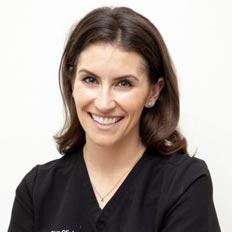

Jennifer welcomes the Dental Council’s new Code: “I think it's very promising to see this new Code of Practice because I think it opens the door to better regulation. The industry in general is very poorly regulated in aesthetics, and I think the general public can conflate injectables with the beauty industry, not unlike what we've seen with teeth whitening. I think the Dental Council recognising this area as something that dental professionals may be equipped to perform, with the correct training of course, is only a positive thing and hopefully is the start of how we can actually protect the public in the long term”.
While Jennifer believes that the Code is a good start, she says that more regulation and training pathways are needed: “It's a highly unregulated area, fillers in particular, as they are not prescription. Nightmares really can go on with that. But equally, just because you can write a prescription and you've injected a bit of Botox, it does not mean that you're sufficiently trained to inject everything all over the face or even peri-orally … I would hope that there would be further guidance similar to orthodontics or oral surgery, and
the way that you don't necessarily have to be an oral surgeon to be taking out … wisdom teeth”.
For any dentist working in the area or thinking about it, Jennifer says: “I'm working closely with my colleagues here in Ireland to work towards regulation. We're working with the British College of Aesthetic Medicine (BCAM), which is our most legitimate body for that. So I would point out to anyone who is working in the area as a dentist and doing some aesthetics to look at membership of the BCAM, as well as their IDA membership”.
Guidance and training
There is no training for this work in the dental schools in Ireland, and Eamon says: “It boils down to the individual to decide whether the training they undertake is of a satisfactory standard and whether the training has an ethical component to it. And again, [the Dental Council] only asks that you're competent. And who assesses that? At what level are you assessed to be incompetent when a mistake occurs?”
Gerry Cleary states that the Dental Council does not provide clinical guidelines to the profession: “The Council’s role is to provide a framework for ethical decision making.
“Dentists are expected to always practise within their scope of competence, and competence is self-determined. It will frequently be the case that two dentists who received the same undergraduate training will, on selfreflection, determine their ability to undertake, for example, implant or endodontic treatment, in different ways. Each dentist will decide this based on their experience of such treatments and their own professional development. But dentists may be held to account for these decisions at a fitness to practise inquiry when a dentist’s competence to perform any particular treatment might be tested”.
Many organisations offer training in this area, although it may be hard for any prospective student to assess the quality of the courses on offer.
186 Journal of the Irish Dental Association | August/September 2023: Vol 69 (4) FEATURE
Risks
Like any procedure, there are risks to patients, and the Code states that practitioners must inform the patient of the treatment plan and the associated risks.
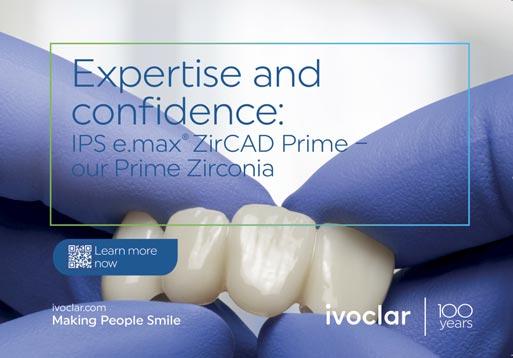
The most common risk associated with anti-wrinkle injections is bruising of the face. With Botox, there are specific risks such as lid ptosis and brow ptosis, and flu-like symptoms. With fillers, there is the risk of vascular occlusion (reduced blood flow to the skin). This can result in scarring, and even blindness in severe cases.
Mairead says the main issue is that practitioners need to be made accountable for these risks and the public needs to be protected from nonmedical practitioners: “We as dentists want to promote effective ethical practice of aesthetic medicine and these codes are very much in line with that”.
Mairead would like to see the consent process detailed more specifically, and the fact that there is no guidance or regulation around that at the moment may be why the Dental Council Code is vague in this area. In the UK, a twostage consent process for aesthetics is being examined, where treatment is not provided on the same day to give people time to consider their choice.
Eamon also notes that ultimately, the absence of regulation is a continuing failure of the Department of Health and the Government.
Products
Mairead says a worrying thing about fillers is that there are over 200 products on the market at the moment that are not CE marked or FDA approved. She says the lack of regulation is a massive issue: “I think the Dental Council itself should push towards the regulation of this. They are very much about safeguarding the public; that's their premise. And they should be [advocating] at a Government level. Obviously we as an Association do that anyway, pushing towards trying to get minimum standards, because
Journal of the Irish Dental Association | August/September 2023: Vol 69 (4) 187 FEATURE
The most common risk associated with anti-wrinkle injections is bruising of the face. With Botox, there are specific risks such as lid ptosis and brow ptosis, and flu-like symptoms. With fillers, there is the risk of vascular occlusion.
Codes on medical emergencies and dental conscious sedation

The Dental Council has also updated two further codes of practice, the Code of Practice regarding Medical Emergencies and the Code of Practice regarding Dental Conscious Sedation.
In relation to the Code of Practice regarding Medical Emergencies, IDA President Dr Eamon Croke says: “Very often the IDA Quality and Patient Safety Committee would take something like this and break it down into bite-size chunks. But this is actually written so well that nearly every word is important. There's no breaking it down. You need to go through it and be aware not only of the need for individual training but also for team training. And you need to do it repeatedly”.
On the Code of Practice regarding Dental Conscious Sedation, he says: “I read through it and I thought the authorities to whom they tip their hat are certainly very dependable and worthy ones. They seem to pick their source material well and it reads well; it's easy to read”.
Dr Gerry Cleary explains why the Council updated the Codes now: “We
felt new codes were required to try and ensure clarity and enhance patient safety. Of the three new Codes, the Code of Practice regarding Medical Emergencies in the Practice of Dentistry is probably the most wide-ranging as this sets the standards that should apply in all dental surgeries in Ireland”.
He continues: “For the first time, the Dental Council is guiding the profession on the range of medications and equipment that should be available in all dental practices. Most importantly, it clearly sets out the obligations on all members of the dental team to be competent and to ensure that medical emergencies are dealt with professionally. The guide sets out a requirement for the team to undertake formal training and, crucially, for the practice to ensure that its in-practice training and procedures are regularly tested and revised. The sedation code sets out further requirements for dentists who provide treatment under conscious sedation, especially intravenous sedation”.
ultimately, our aim as an Association, and I suppose as a profession as well, is that these treatments should be provided in a safe and ethical manner”. The Code states that practitioners should only use products authorised by the Health Products Regulatory Authority (HPRA), “even if the indication that you are using it for is not authorised”.
When asked about this, the HPRA stated: “The product information (summary of product characteristics (SmPC) and package leaflet (PL)) for each authorised medicine is available from the ‘Find a Medicine’ section of the HPRA website. The SmPC and PL provide information on the safe and effective use of authorised medicine for healthcare professionals and patients, respectively. Use outside of the terms of the SmPC is often referred to as off-label use. Such use is a clinical practice decision, and falls outside the remit of the HPRA”.
188 Journal of the Irish Dental Association | August/September 2023: Vol 69
FEATURE
(4)
Of the three new Codes, the Code of Practice regarding Medical Emergencies in the Practice of Dentistry is probably the most wideranging as this sets the standards that should apply in all dental surgeries in Ireland.
Workforce issue
One of the appeals for many practitioners is that doing this work allows them to make a good living doing fewer hours with lower operating costs.
This is attractive, but Eamon says that Ireland is also experiencing a shortage of dentists and this work is taking dentists out of general dental practice. He says that non-surgical cosmetic procedures also support the stratification of
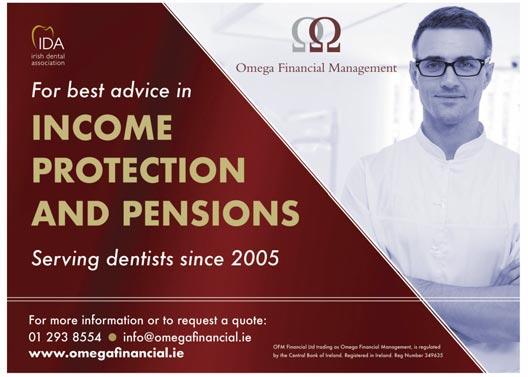

Journal of the Irish Dental Association | August/September 2023: Vol 69 (4) 189 FEATURE
care: “If you have money, you can afford it, and if you don't, you can't. That is both a practical and an ethical concern”.
Practitioners who are doing this work need and want more guidance, and the new Code is a good start. What is clear is that further regulation of this area is needed to protect the public.
Fintan Hourihan, IDA CEO, said: “We have asked that the Council would arrange presentations on these important new Codes to the profession in order to promote awareness to address the significant number of reasonable questions, which we expect will emerge from practitioners as they review the Codes”.
The three new Codes of Practice are available on www.dentalcouncil.ie.
The importance of indemnity

Dr Martin Foster, Head of Dental Services – Ireland for Dental Protection, says that if a dentist is to do non-surgical cosmetic procedures they need to ensure they are adequately indemnified. Dental Protection is a membership organisation and he says: “Dentists can have membership that includes indemnity to carry out non-surgical cosmetic procedures. Not all such procedures are the same of course, so different levels of indemnity may be required. For example, if a dentist carries out treatments such as the administration of Botox, collagen replacement therapy, dermal fillers and/or wrinkle reduction treatments in the lip, naso-labial folds and immediate peri-oral area, the indemnity required would be for ‘dental cosmetic procedures’. However, a dentist who delivers more extensive or involved treatments such as, for example, high-energy wrinkle reduction techniques, Botox, dermal fillers, dermabrasion, laser treatments or chemical peels on the face (rather than just the peri-oral area), the indemnity required would be for ‘oro-facial aesthetic procedures’. It is important that dentists check that their indemnity is appropriate for whatever work they are doing in their professional practice”.
On the new Code, Martin says: “The new Code is far from a long read but it does set out the basic professional expectations of training and competence to ensure safety. It includes comment upon the standard of product to be used – again this has a safety perspective. The central importance of patient consent is emphasised and this of course necessitates addressing the question of risks. The guidance does not say much about the nature or quality of the additional education and training that the Dental Council would expect a dentist to have undertaken. Some may see this as a potentially grey area”. For anyone performing these procedures, expectation management is a tricky area, says Martin: “When a patient presents with pathology –pain, a broken tooth, an infection, etc. – there is a problem and operative treatment will aim to address this. The outcome sought is an objective one: the problem is fixed and the situation is improved. With ‘cosmetic’ procedures there is no pathology as such, and the intervention is not primarily about dealing with damage or disease but is intended to improve aesthetics, or in other words, increase beauty. As we all know, this quality is very much in the eye of the beholder and can be a very subjective thing. There is often no real end point and there may be a lack of shared expectation between patient and clinician as to what ‘success’ literally looks like. Therefore, it is important to take great care to establish and manage patient expectations. It is also doubly important to ensure a robust consent process is followed and documented whenever any elective treatment is provided. After all, as there is no disease or damage being addressed, an intervention has the potential to make the situation worse by actually introducing this. The patient, therefore, needs to be fully aware of any risks”.
Martin says that protecting patients is paramount, no matter the procedure/treatment: “The foundation of ethical care rests on the basic principle of ‘first do no harm’, and it is always worth reflecting on this”.
190 Journal of the Irish Dental Association | August/September 2023: Vol 69 (4)
FEATURE DENTANET
NOW WELCOMING NEW CLIENTS 22 Tralee Road, Castleisland, Co. Kerry V92 AF82 T: +353 (0)66 714 3964 M: +353 (0)87 332 4779 E: infodentanet@gmail.com www.dentanet.ie
One of the appeals for many practitioners is that doing this work allows them to make a good living doing fewer hours with lower operating costs.
DENTAL LABORATORY SERVICE
Taking the legal route
Even the most experienced, accomplished and highly qualified dentists make mistakes, but not every person considers suing their dentist as a solution when something goes wrong.
How outrageous would it sound if someone told you that a successful wisdom tooth extraction performed on a 39-year-old male would result in two years of litigation and the equivalent of over ¤400,000 paid in damages and legal expenses, as well as an immeasurable reputational and personal cost to the dentist? It sounds like something that could only happen in America, but sadly this happened to one of our members at Dental Protection. And the worst part is that it is far from being an exception.
If you were aware of the signs indicating that some patients might be more likely to sue you than others, it could be worthwhile following a few simple guidelines to avoid the situation described above.
Spotting the signs
Throughout my career as a personal injury solicitor, I have seen a pattern emerge and be repeated time and time again. There are patients with serious complaints/injuries who are completely satisfied (and even grateful for) a refund and for their remedial treatment/rehabilitation to be funded, while others who suffer a mere adverse outcome (which they were usually fully warned about at the outset) instantly ‘lawyer up’ and pursue an expensive clinical negligence claim. Since moving into my role at Dental Protection, I have learned that the world of dental injuries is definitely no exception to this phenomenon.
This has led me to consider the particular personality traits in some individuals that lead them to be more likely to take legal action than others. And if there are common personality traits, is there something that you can do differently in your treatment of these patients to try to prevent this happening to the best of your ability?
I’m certainly not saying it is possible to prevent all injury-related litigation. There will always be some people who simply cannot be pleased and will complain or attempt to pursue a claim. But in many cases (dare I say most cases), there are steps you can take to reduce the likelihood of a litigious outcome with people who possess a propensity to sue.
Who is most likely to sue?
A European study was undertaken into the profile of a person most likely to litigate.1 Interestingly, the study found that the demographic characteristics of
sex, educational level and economic status were not predictors of the likelihood to litigate. The dominant predictors were age, religious disposition, level of dependency on the health system and certain personality traits. Older patients with a more religious disposition were the least likely to have litigious intentions. It is considered that a stronger religious background perhaps meant those people were more likely to view a setback or mistake as a test of faith in God or the healing process.
Patients who were more frequent users of the healthcare system were also less likely to report litigious intentions. It is considered that perhaps given that they are more likely to experience dependence on their health provider, this may make them feel less inclined to sue them.
The biggest indicator by far for the likelihood of a person suing their practitioner was a higher expectation of information during a medical consultation. Patients with greater expectations of receiving information during doctor-patient consultations were more likely to consider suing their practitioner.
Information and consent
This finding underlines the critical importance of obtaining valid consent for all clinical procedures after adequately informing the patient of the treatment options and the risks, benefits and costs of those options. The above study highlighted that failures in the area of doctor-patient communication are crucial in a patient’s decision to sue.
Which types of people have a higher expectation of information during a clinical consultation? Generally speaking, people with higher levels of stress or anxiety are the most likely to be reliant on, and to demonstrate almost obsessive behaviour about, the information they require from a practitioner. Everyone, regardless of their underlying personality type, experiences or has experienced anxiety at one time or another. However, people with anxiety disorders frequently have intense, excessive and persistent worry about everyday situations, according to the Mayo Clinic.2 Their feelings of intense anxiety and fear or terror interfere with daily activities and are out of proportion to the actual danger. Certainly, not every single person who suffers from an anxiety disorder is going to have a propensity to sue you, but they would all benefit from receiving appropriate and detailed information in relation to their dental treatment, as part of the consent process.
Helen Harbourne Claims Manager, Dental Protection

When I consider the high-value dental cases I am currently handling, many of the patients involved in these cases have this element in common. They all suffered from anxiety disorders of varying degrees prior to their dental treatment and they all had a higher than usual requirement for information during their consultation – as well as a continued need for information and consideration during the recovery period.
For these people, it’s about having their suffering validated and understood and, as a result, they tend to become obsessive litigants. The cost or
Journal of the Irish Dental Association | August/September 2023: Vol 69 (4) 191
PRACTICE
MANAGEMENT
consequences of litigation are sometimes trivial to these patients and a sense of retribution for a real or imagined slight or injustice is their foremost priority.
Patient-centred care
Practitioners who adopt a more patient-centred approach experience numerous beneficial outcomes, including higher patient satisfaction and adherence, and better health outcomes, but also a decrease in the likelihood that their patients might develop litigious intentions.
Perhaps then we could consider that in getting to know our patients better at the consultation stage, not only can we identify potentially litigious patients, but we could also take requisite steps to manage them. Consider, for the sake
of an extra few minutes spent with these patients, explaining, listening and keeping good clinical records, would it not be worth saving the stress and indignity of litigation? Your future self would likely thank you for this extra investment of time.
References
1. Tsimtsiou Z, Kirana PS, Hatzimouratidis K, Hatzichristou D. What is the profile of patients thinking of litigation? Results from the hospitalized and outpatients’ profile and expectations study. Hippokratia. 2014;18(2):139-143.
2. Mayo Clinic. Anxiety disorders. mayoclinic.org/diseases-conditions/anxiety/symptomscauses/syc-20350961.
Quiz
Submitted by Dr Clair Nolan.
A parent calls your surgery reporting a recent trauma that has occurred. His nine-year-old son has broken his tooth while playing at home. The parent is asked to describe what has happened on the telephone and to send a photo of the tooth to the dentist. An emergency appointment is given and the child is treated according to current guidelines.
1. What injury can be diagnosed from the teledentistry photo (below), and what is the importance of timely surgery attendance for this type of injury?

2. What is the current recommended treatment for an enamel-dentinepulp fracture?
3. What is the recommended follow-up protocol for this patient?
Answers on page 198.

192 Journal of the Irish Dental Association | August/September 2023: Vol 69 (4) PRACTICE MANAGEMENT
MEMBERS’ NEWS
Pre-Budget Submission 2024
Access to dental care in Ireland is in crisis. The Irish Dental Association’s pre-Budget submission offers tangible solutions and recommendations to address the many issues in dentistry and oral health here.
Oral and dental health form an essential part of general health and well-being, yet for more than two decades now oral health has been ignored by consecutive Governments in terms of promotion, funding, and service delivery.
The Irish Dental Association (IDA) has long called for measures that would improve access to oral healthcare for all patients in the short and medium term. But the State’s ‘blind spot’ when it comes to dentistry and oral health means that no meaningful attempt has been made to address the challenges for patients in accessing dental care, or to stop the rapid deterioration of the public dental service.
According to the Central Statistics Office (CSO), 80% of expenditure on dental care in Ireland is out of pocket. This shows that State assistance towards the cost of dental care is extremely limited as compared with other health conditions. Much more worryingly, however, it indicates that good oral health is very strongly linked to socio-economic status, with oral diseases and conditions disproportionately affecting poor and vulnerable members of society.
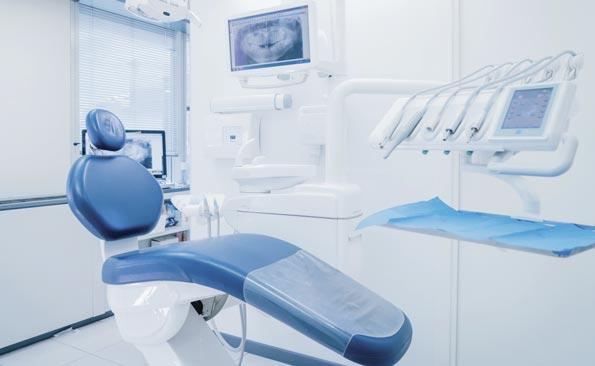
In Budget 2024, the IDA believes that the Government should prioritise spending on oral health towards vulnerable groups, in particular medical card patients and children.
For context, in the public dental service, the number of dentists has dropped by almost one-quarter over the past 15 years. This has led to a sharp fall-off in the level of preventive care and screening taking place in the community, with children missing out on fundamental early diagnosis, prevention and intervention, resulting in more drastic treatment or, in the worst cases, extractions being required.
We are also not producing nearly enough dental graduates to supply the public and private sectors. Years of underinvestment – despite promises by successive Governments – means that our dental schools do not have the basic capacity to educate and train enough dental practitioners to meet population needs and account for dentists retiring from the sector.
In order to address this imbalance, the IDA is calling on the Minister for Health, alongside the Department of Finance and the Department of Public Expenditure, to agree and commit to properly funding and resourcing dentistry and oral healthcare in Ireland to ensure equitable access to care.
The Association’s pre-Budget submission outlines seven budgetary recommendations, estimating that an additional allocation of ¤71m is required to address the resourcing crisis and training, and that an allocation of between ¤108 and ¤232.5m is needed to deliver a reformed medical card scheme (Dental Treatment Services Scheme (DTSS)).
This, alongside meaningful consultation and constructive dialogue with the profession, is an important next step in tackling the longstanding barriers that have faced patients in accessing public dental services, whether the medical card scheme or the school screening programme.
The unfortunate reality is that, sadly, without the political willingness, patients –in particular children and those most vulnerable – will continue to fall further behind in terms of their oral health and shoulder the burden of a system crumbling under decades of inaction and neglect. Patient access, not political soundbites, must be central to any measures introduced.
Journal of the Irish Dental Association | August/September 2023: Vol 69 (4) 193
Volume 69 Number 4
2023
August/September
Seven recommendations for Budget 2024
Seven key areas
To address the current difficulties in accessing dental care, the IDA is calling on the Government to prioritise spending and investment in seven key areas, with a particular focus on vulnerable groups, including children and medical card holders.
The Association is also recommending that funding be allocated to training and education to underpin the sustainability of dental provision and service into the future.
1. Immediate allocation of ¤7m to hire 76 HSE wholetime equivalent (WTE) dentists to cut waiting lists for service and treatments in the public system.
The public dental service must be adequately staffed and resourced. In 2022, 99,367 children were seen under the school screening programme, which is less than half of those who should have been seen in second, fourth and six classes. Of those who are being seen, many are being seen late, with an almost 10-year backlog in accessing services in parts of the country where children are only receiving their first appointment when they are in their fourth year of secondary school.
A ¤5m initiative was announced in last year’s Budget to address the school screening backlog, yet no additional public service dentists are allowed to be hired with these funds. Instead, existing overworked and demoralised staff will be asked to volunteer to work additional hours at evenings and weekends.
Based on the current population, 450 WTE dental posts are needed in the HSE public dental service (this number stands at 254 in 2022) in order to address the difficulties apparent in the service and to enable the service to deliver on its stated objectives of preventing dental health difficulties, as well as caring for and treating children and other vulnerable groups.
As a starting point, we are calling on the HSE to hire 76 WTE dentists immediately to bring the service back to the level it was at in 2006 (330.1 WTEs).
2. Immediate allocation of ¤6m to hire 30 specialist orthodontists to address the up to three-year waiting lists for orthodontic care.
The Orthodontic Service in the HSE is also suffering hugely as a result of the cutbacks and lack of resourcing, which have led to long waiting lists for screening and treatment.
The number of specialist orthodontists recruited over the past decade has been completely inadequate. HSE figures from February 2022 show that there are 13,294 patients on orthodontics waiting lists, 11,088 of whom have been waiting longer than a year, with 5,076 waiting longer than three years.
We are calling on the State to commit to funding of ¤6m to hire 30 specialist orthodontists to ensure that patients with the most severe orthodontic needs are not waiting for excessive periods (up to three years) for critical care.
3. Allocation of between ¤108 and ¤232.5m to deliver a reformed medical card scheme (DTSS) through the provision of a voucher or credit towards dental care of between ¤100 and ¤500, respectively.
The Association has advocated for many years regarding the unsuitability of the Dental Treatment Services Scheme (DTSS) for the 1.5m adults who hold medical cards. We have consistently sought the commencement of discussions with the Department of Health on an entirely new approach to providing important dental care for these patients.
Despite repeated promises that the Department will instruct its officials to enter discussions with the Association on a new scheme, and deadlines suggested by the Minister for Health, which have passed on many occasions, we are no closer to addressing the obvious problems in accessing care by medical card holders.
There are now barely 600 dentists operating this scheme for 1.5m adults nationally. This is the equivalent of one dentist per 2,500 patients.
In 2022, despite the Government committing an extra ¤10m to the DTSS, approximately ¤49.5m was spent on the Scheme, far short of the ¤63.3m spent in 2017 and ¤86m spent in 2009. The figures for the number of medical card patients treated are even more stark, with just 256,768 patients treated in 2022. This is over 150,000 fewer patients than were treated in 2017 (when 412,789 patients were seen under the DTSS). Put more starkly, this is a massive 60% decrease in medical card patients being seen.
In the absence of any engagement, last year the IDA supported an independently commissioned research report (prepared by Prof. Ciaran O’Neill of Queen’s University Belfast), which outlined an alternative proposal to improve access to dental care for medical card patients that was informed by international best practice. This would take the form of a voucher scheme, which would offer between ¤100 and ¤500 towards dental care and would be a total cost per annum of approximately ¤108m and ¤232.5m, respectively.
Meanwhile, the crisis worsens on a daily basis; 80% of IDA members who currently hold a DTSS contract say they are no longer able to take on or see new medical card patients because they are at maximum capacity. Patients cannot get a dentist and are having to travel outside of their communities and counties to access care.
The problem will not be solved by tinkering with the existing scheme, which is why we are advocating for a more radical reform. Some 93% of dentists say that they would not re-join or sign up to the medical card contract in its current form.
The Government must commit to starting meaningful engagement on a new dental scheme for medical card patients and, in this Budget, ringfencing appropriate levels of funding for it.
4. Expand the Med 2 (dental tax relief) scheme to increase the tax band from 20% to 40% and specifically include dentures in the scheme. The Taxes Consolidation Act 1997 provides for tax relief in respect of qualifying health expenses, including dental charges. Routine dental
MEMBERS’ NEWS 194 Journal of the Irish Dental Association | August/September 2023: Vol 69 (4)
treatment is explicitly excluded under the legislation, and is defined as "the extraction, scaling and filling of teeth and the provision and repairing of artificial teeth or dentures". However, an individual can claim tax relief in respect of non-routine dental care provided by a registered practitioner.
A comprehensive and non-exhaustive list of relevant procedures is available on the Revenue Commissioners' website. This list includes major interventions such as periodontal treatment for gum disease and orthodontic treatment to provide braces.
Until 2009, marginal rate relief (40%) was allowable for those dental treatments covered by the scheme. Since then, this has been confined to standard rate (20%) relief only.
We believe that reform and expansion of the Med 2 scheme can significantly alleviate the difficulties faced by patients in accessing dental care. A number of options are available for consideration:
n expansion of the range of treatments for which relief could be claimed at the standard rate, such as dentures; n allowing marginal rate relief for some or all dental treatments; and, n allowing marginal rate relief subject to a ceiling for some or all dental treatments, including dentures.
The IDA surveyed private practice members in late June 2022 and found that 86% of dentists believe that reform of the Med 2 dental scheme would improve access to dental care. Asked about the likely benefits for patients of extending the scheme, 38% cited improved oral health, 35% suggested that it would result in more affordable dental care, and 27% would expect improved access to dental care.
5. Allocation of ¤3m to reintroduce a Foundation Training Scheme to facilitate new graduates in gaining experience in a mentored environment.
The IDA believes that it is vital that the Government fund the reintroduction of a Foundation Training Programme as a matter of urgency, as part of the solution to the workforce crisis in the sector. Until 2011, Ireland had a Dental Foundation Training Programme (previously Vocational Training), which was a one-year voluntary training programme with approximately 12 places available to new graduates from the two dental schools. Participants spent two days per week in general dental practices, two days in the HSE dental services, and one day a week in a programme of lectures and small group teaching as part of continuing dental education.
In 2013, a group of stakeholders, including the IDA, the two dental schools, the RCSI and the Dental Council, submitted a proposal to the Department of Health that a Dental Foundation Training Programme be re-established whereby trainees, upon graduation from the two dental schools, would rotate through different areas of work experience in both the public and private sectors. The report outlined that the Programme would help to address the considerable unmet dental need of the Irish population while, at the same time, underpinning continuing professional development of new graduates here.
Unfortunately, the Department of Health did not support the proposal at the time, as it similarly did not support our calls more recently for mandatory professional education for dental professionals to bring the
profession into line with other healthcare practitioners and international best practice.
We believe it is vital that this Foundation Training Programme be introduced as a matter of urgency as part of the solution to the workforce crisis in the sector.
6. Capital investment of ¤55m to deliver the overdue new dental hospital at UCC, which was originally due for completion in 2023.
The two dental schools in Dublin and Cork are struggling, due to entirely inadequate funding, to cope with the existing numbers in training. The decades of underinvestment in our dental schools has absolutely contributed to the lack of dental graduates coming through the system each year, the results of which we are now seeing and feeling in the overall staffing and resourcing crisis facing dentists and dental patients.
The IDA is calling for the new dental school at UCC to be funded as a priority. Approval was given for this development in 2019, with ¤34m in funding secured from the European Investment Bank. The 8,500sqm Cork University Dental School and Hospital was due for tender in February 2020 and set for completion in summer 2023. No progress has been made on the building since the sod was turned in 2019.
Of particular note, the new dental school expansion would have allowed an increase in the student cohort from 50 to 72, a 44% increase in places.
7. Additional funding of ¤20m for the two dental schools at UCC and TCD. While the Association welcomes the announcement of extra college places for student dentists under the Higher Education Authority (HEA) proposals as an important step for Irish school leavers wishing to practise dentistry here in Ireland, it is also calling on the Government to ensure that this plan gets the necessary investment and funding to ensure that the additional places are realised.
The Government must provide sufficient funds to the dental schools immediately and as part of this budgetary cycle, in order to end the reliance on funding from students from outside the European Economic Area (EEA).
For context, this year – as per previous years – approximately half of the final year dental students in both Dublin and Cork are non-EEA students. Currently, within the final year at Cork Dental School, 25 of the students are from the EEA or the EU and 36 are from outside the EEA. The situation is similar in Dublin. The reason we are seeing this is because the students from outside the EEA are paying between ¤45,000 and ¤55,000 per annum in fees, and are effectively cross-subsidising the other students.
Due to the reliance on non-EEA students to cross-subsidise the underfunding of the dental schools, graduates from Irish dental schools have only made up about one-third of those registering with the Dental Council for the last 15 years.
The most effective step that the State could take right now is to ensure that dental schools have enough funds so that they do not need to reserve places for non-EEA students, which would mean that more local school leavers would be able to take up places in dental schools and, hopefully, be available to work here in Ireland when they graduate.
Our estimations indicate that additional State funding of ¤20m per annum for the dental schools in UCC and TCD will ensure that they are not reliant on fees generated by non-EEA students.
MEMBERS’ NEWS Journal of the Irish Dental Association | August/September 2023: Vol 69 (4) 195
IDA at the Oireachtas
On July 5, an IDA delegation addressed the Oireachtas Joint Committee on Health on a number of issues and challenges facing dentistry in Ireland.
IDA President Dr Eamon Croke, Immediate Past President Dr Caroline Robins, GP Committee Chair Dr Will Rymer, CEO Fintan Hourihan, and Manager of the Communications and Advisory Service Roisin Farrelly made presentations to the Committee, which in turn asked the Association to identify the most important issues affecting and confronting the IDA so that the Committee could relay these to the Minister for Health. In response to this request, Fintan Hourihan recently wrote to the Chair of the Committee, Seán Crowe TD, thanking the Committee for its invitation to the IDA, and outlining the issues requiring particular attention:
Capacity
The IDA asked the Department to recognise the dental workforce crisis and take a number of immediate actions, including reforming work permit regulations to make it easier for non-EEA dental practitioners and dental graduates to work in Ireland, initiating a recruitment campaign to hire more dentists into the public service, and proper funding of dental schools to reduce the reliance on funding from overseas students, alongside an immediate increase in the number of places available for Irish school leavers and EU citizens. The letter also pointed out the importance of proper workforce planning by centralised data collection on the numbers of actively practising dentists, nurses and hygienists.
Access for vulnerable groups
The Association urged the Committee to support its call for immediate investment in the HSE school screening service, including the employment of extra dental staff, and for the commencement of discussions on a new scheme to replace the medical card scheme. The Association is also proposing reform of the Med 2 tax relief scheme to reduce the cost of more expensive dental treatments.
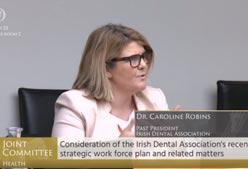

Legislation and other matters
The letter reiterated that the publication of a new Dental Bill is urgently required to modernise the regulation of dental practice and, especially, to enable the introduction of critical safeguards to protect patients and place the requirement for continuing professional development (CPD) on a statutory footing.
The letter also referred to the Committee’s undertaking to follow up on the status of the new UCC Dental School.
Another area of importance is the recognition of more dental specialties, and the IDA has sent supplementary information to the Clerk of the Committee, Mr Tom Sheridan, on this issue.
The Association asked for the Committee’s support in urging Minister Donnelly to enable recognition of those specialties, as recommended by the Dental Council, to provide greater clarity for the public when visiting their dentist, to enable the public dental service to recruit experts in areas such as paediatric and special care dentistry, and to support and promote greater education and the acquisition of dental expertise by dentists (which typically occurs at their own expense).
Roisin Farrelly Manager of Communications and Advisory Service
Finally, the letter welcomed the Committee’s undertaking to prioritise workforce planning in the wider health sector after the summer recess.

196 Journal of the Irish Dental Association | August/September 2023: Vol 69 (4)
MEMBERS’ NEWS
IDA Immediate Past President Dr Caroline Robins.
Dr Will Rymer, Chair, IDA GP Committee.
Injectable composites in modern practice
The injection moulding technique allows dentists to plan a predictable aesthetic outcome.
Background
Adults are retaining their teeth for longer and tooth wear is therefore on the rise.1 This is not just an ageing challenge as evidenced from a pan-European study, which found that moderate tooth wear was present in 29% of 18-35 year olds.2 The management of tooth wear has been aided by the gradual improvement in adhesive products. Once stabilisation has been achieved, an adhesive and minimally invasive approach should be the first line of treatment, as recommended by the European Consensus Statement on the Management of Tooth Wear.3
The improvement in composite resin products has allowed us to manage cases in a highly conservative and aesthetic way. Historically, optimal strength, aesthetics and viscosity were difficult to achieve in a single product. In particular, producing a flowable composite that offered excellent aesthetics and flexural strength was complicated. With the evolution of composites and the development of nanotechnology, however, these issues have been overcome, and there is now a range of highly filled flowable composites on the market. Some products (e.g., Filtek Supreme Flowable by 3M) achieve a high filler percentage by arranging their particles in nanoclusters, which wear at the same rate as the matrix, thus allowing for more durable aesthetics. Other products (e.g., G-aenial Universal Injectable by GC) use nanotechnology to universally disperse filler particles so finely that it allows for a very high filler percentage.
The availability of high-strength flowable composites has enabled the use of the injection moulding technique in dentistry. This essentially involves injecting a flowable composite through a clear silicone stent under pressure. The stent is fabricated on the diagnostic model, and the aesthetic and occlusal elements of the wax-up can therefore be replicated predictably. The case report below describes a composite rehabilitation using this technique.
Case report
A 34-year-old female was referred for the management of severe tooth wear. There was a clinical history of bulimia, which had stabilised. The primary complaint was ‘shortening of the teeth, which were unevenly worn on one side’. Extra-oral examination revealed masseteric hypertrophy and intra-oral examination revealed generalised tooth wear with UL3 to UR5 most severely affected (Figures 1a and 1b). A diagnosis of severe erosive tooth wear complicated by attrition was made.
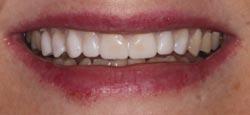


Dr Micheál Healy BDS(NUI)
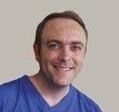
MClinDent(Pros) MPros RCS(Ed)
MFDS RCS(Ed)
Prosthodontist
Kingdom Clinic
Killarney
It was decided to treat the UL3 to UR5 with composite resin at an increased occlusal vertical dimension (OVD). The posterior teeth would be allowed to ‘Dahl’ or ‘compensate’ into occlusion. The aims of treatment were as follows:
n restore the worn tooth surfaces of the most severely affected teeth; n restore the right-side occlusal plane to match the left side; n improve dental aesthetics; and,
n allow the untreated teeth to ‘Dahl’ into occlusion.
A digital workflow was followed in this case. An intra-oral scan was taken of both arches, with a pre-contact record in retruded axis position (RAP) at the proposed OVD. Clinical records and photos were used when prescribing the digital wax-up. A putty index was made on the printed model and this allowed the wax-up to be tested intra-orally by carrying out an intra-oral mock-up using Protemp (3M) (Figure 2). The patient tested the aesthetic and occlusal outcome in advance.
Corresponding author: Dr Micheal Healy, E: michealhealy@hotmail.com
Journal of the Irish Dental Association | August/September 2023: Vol 69 (4) 197
FIGURES 1a and 1b: Pre-operative photographs.
CLINICAL TIPS
FIGURE 2: Mock-up.
CLINICAL TIPS
The patient attended on a separate day for treatment and the following steps were carried out:
1. A clear matrix was fabricated chair side using Exaclear (GC). This silicone material was injected into a clear impression tray, into which the printed model was seated. This was allowed to set in a hydro-flask (TOPDENT; PolyPot) for ten minutes. Access holes were then prepared through the stent (Figure 3).
2. Teeth were isolated and pumiced clean, followed by air abrasion.
3. Every alternate tooth was separated using PTFE tape.
4. The teeth were acid etched and bonded using G-Premio BOND (GC).




5. The Exaclear stent was seated and every alternate tooth was injected in two stages – the palatal wall first, followed by the buccal layer.
6. Excess material was trimmed with a size 12 scalpel before polishing was carried out – even contacts were achieved on UL3 to UR5.
Full arch contacts were achieved by the ten-week review appointment, at which point a hard acrylic splint was fabricated. The patient attended for six- and 12month reviews, during which time no chipping and minimal staining had occurred
Quiz answers
Questions on page 192.
1. From the photograph, an enamel-dentine-pulp fracture of the maxillary left central incisors can be diagnosed. It is important to get the patient to attend the dental surgery as soon as reasonably possible for further assessment of the injury, including percussion tests, mobility test, sensibility test and radiographic test. This is to ensure that no other dental injuries, such as luxation or root fracture, have occurred to the tooth, or to the adjacent or opposing teeth.
2. For this trauma, with no mobility, root fracture or luxation injury identified, a partial pulpotomy is recommended. Apply local anaesthesia, isolate with rubber dam if possible, disinfect with sodium hypochlorite, and perform
Conclusions
The improvement in bonding protocols has allowed composite to be a viable alternative to indirect restorations in the management of tooth wear. Although highly conservative of tooth structure, the literature would describe composites as a ‘medium-term’ treatment option, with high patient satisfaction. Their survival has been quoted at five years when used in the treatment of tooth wear at an increased OVD.4 The evidence relates to paste composites, which were not nanofilled. It is clear that there is plenty of scope for research on nano-filled injectable composites in tooth wear cases. They offer a truly conservative treatment option and allow for a highly predictable aesthetic and occlusal outcome through the injection moulding technique.
References
1. Eaton KA. The adult dental health survey 2009. Prim Dent Care. 2011;18(3):99-100.
2. Bartlett DW, Lussi A, West NX, Bouchard P, Sanz M, Bourgeois D. Prevalence of tooth wear on buccal and lingual surfaces and possible risk factors in young European adults. J Dent. 2013;41(11):1007-1013.
3. Loomans B, Opdam N, Attin T, Bartlett D, Edelhoff D, Frankenberger R, et al. Severe tooth wear: European Consensus Statement on Management Guidelines. J Adhes Dent. 2017;19(2):111-119.

4. Gulamali AB, Hemmings KW, Tredwin CJ, Petrie A. Survival analysis of composite Dahl restorations provided to manage localised anterior tooth wear (ten year follow-up). Br Dent J. 2011;211(4):E9.
pulpotomy to a depth of 2mm using a around diamond bur and water/saline spray. Place a cotton pellet moistened in sodium hypochlorite over the pulp until bleeding has ceased, apply pulp capping material, seal with glass ionomer cement and restore the tooth with composite. If the tooth fragment is available, this can be bonded back onto the tooth after the exposed pulp is treated. Guidelines for treatment of dental trauma found in the Dental Trauma Guide at https://dentaltraumaguide.org/.
3. Clinical and radiographic follow-up is recommended at three, six and 12 months. It is recommended to look for signs of loss of vitality, root resorption and infection long term.
198 Journal of the Irish Dental Association | August/September 2023: Vol 69 (4)
(Figures 4 and 5).
FIGURES 5a and 5b: Pre-operative and postoperative view of incisal plane.
FIGURE 3: Clear stent (Exaclear) fabricated on digital wax-up model.
FIGURES 4a and 4b: Postoperative photos.
Oral health and oral health-related quality of life in a homeless population in Ireland: a pilot study
Précis
Homeless populations face extreme oral health inequalities, experiencing more dental disease than the general population, and negative impacts on oral health-related quality of life.
Abstract
Background: Smile agus Sláinte – the National Oral Health Policy (2019), aims to reduce oral health inequalities by enabling vulnerable groups, including the homeless, to access oral healthcare. However, there is sparse evidence regarding the oral health of people experiencing homelessness. This study aims to assess the oral health and oral health-related impact on quality of life among homeless adults for the first time in an Irish population.
Methods: A pilot cross-sectional epidemiological study of homeless adults in Cork City, Ireland, including clinical examination and interviewer-administered questionnaire and OHIP-14 survey, was conducted. A convenience sample was recruited in collaboration with homeless service providers.
Results: The sample consisted of 25 participants. The mean D3vcMFT of the participants was 19.4 (SD ± 7.1). The D3vcT% was 41.8%. Participants had poor oral hygiene, and 70.8% had periodontal pocketing of 4mm or more. Some 79% of participants had experienced dental trauma. Participants’ most commonly reported oral health-related impacts on quality of life were feeling embarrassed (60%), feeling uncomfortable to eat (56%), feeling self-conscious (48%), and painful aching (48%).
Conclusions: Homeless adults in Ireland experience extreme oral health inequalities. To achieve the goals of Smile agus Sláinte, a foundation of high-quality epidemiological evidence is required. Further research will require extensive collaboration with homeless service providers and the wider health profession, and should seek to inform the design of oral healthcare services for homeless adults.
Key words: Homeless; oral health; oral health-related quality of life; dental public health; epidemiology.
Journal of the Irish Dental Association August/September 2023;69(4):199-204

Introduction
Homeless adult populations are more likely to suffer physical and mental ill health than their housed peers.1 In addition to these greater needs, people experiencing homelessness face more barriers to accessing healthcare services than the housed population.2,3 In high-income countries, they are more likely to endure toothache and loose teeth, and have untreated dental decay, than the general population.4 There is limited research regarding the oral health of the adult homeless
population in Ireland. The only study of a homeless population in Ireland involving a clinical dental examination was conducted over 20 years ago5 and found higher levels of dental disease and poorer access to dental services among homeless adults compared to the housed population. Subsequent research has primarily focused on self-reported oral health measures as part of wider surveys of the general health of homeless populations.6-14
Over the last decade, the number of homeless adults in Ireland has more
CHO4 HSE Dental Services
Journal of the Irish Dental Association | August/September 2023: Vol 69 (4) 199 PEER-REVIEWED
Dr Shane O'Dowling Keane Restorative Department Cork University Dental School and Hospital
Dr Graham Quilligan Restorative Department Cork University Dental School and Hospital
Prof. Máiréad Harding Oral Health Services Research Centre Cork University Dental School and Hospital
Corresponding author: Dr Shane O'Dowling Keane, Restorative Department, Cork University Dental School and Hospital, CHO4 HSE Dental Services E: s.odowlingkeane@ucc.ie
than doubled to 7,431 people.15 However, the so-called hidden homeless –those sleeping rough, couch surfing, living in insecure or inadequate housing, and people living in domestic violence shelters – are excluded from this figure.16 The European Federation of National Organisations Working with the Homeless developed the European Typology on Homelessness and Housing Exclusion (ETHOS) to improve measurement and understanding of homelessness.17 This typology provides four conceptual categories to describe homelessness: rooflessness; houselessness; living in insecure housing; and, living in inadequate housing. ETHOS has been adopted to describe homelessness in this study.
Smile agus Sláinte – The National Oral Health Policy (2019) highlighted the absence of high-quality epidemiological evidence regarding vulnerable populations such as the homeless.18 The aim of this pilot study is to describe the oral health, oral health behaviours, and the impact of oral health on quality of life for an adult homeless population in Ireland.
Methods
Ethical approval was granted by the Clinical Research Ethics Committee of the Cork Teaching Hospitals (Ref: ECM 4 (k) 13/4/2021).
Participants and setting
A pilot cross-sectional epidemiological study of homeless adults (>18 years) according to ETHOS17 was conducted in Cork City. The study was conducted in an emergency homeless shelter, supported residential units and a homeless charity across a four-week period in July and August 2021. The study was conducted in accordance with Health Protection Surveillance Centre Guidance on Managing Infection Related Risks in Dental Service during the Covid-19 Pandemic.19 Homeless service users participating were informed of the study by homeless service providers. They were then approached by the examining team on data collection days, and invited to participate. All participants received an information leaflet, and gave written and verbal consent to take part in the study.
Variables
A clinical examination and an interviewer-administered questionnaire were conducted. Data regarding demographics, general health and health behaviours, self-reported oral health and oral health behaviours, and medical card ownership were collected.
The clinical indices used were oral soft tissue lesions, traumatic dental injuries, modified Community Periodontal Index (CPI), clinical attachment loss (CAL), D3vcMFT, and removable dental prosthesis. The CPI, CAL and D3vcMFT were conducted as described by Whelton et al. (2007).20 This permitted the measurement of the presence or absence of a periodontal condition in each sextant rather than only the worst score. It also allowed the charting of visual, non-cavitated dental caries into dentine rather than
200 Journal of the Irish Dental Association | August/September 2023: Vol 69 (4) PEER-REVIEWED
Conceptual category Operation category Living situation % (n) Roofless People in emergency accommodation Night shelter 8% (2) Houseless People living in accommodation for the homeless Homeless shelter 24% (6) Insecure People receiving longer-term support Supported accommodation for formerly 68% (17) (due to homelessness) homeless people
Table 1: Living situation of the participants according to ETHOS typology (FEANTSA, 2017).
% (n) General health Receiving treatment for a medical condition 100% (25) Heart disease 8% (2) Diabetes mellitus 12% (3) Epilepsy 20% (5) Respiratory disease 24% (6) Depression 28% (7) General health behaviours Tobacco smoking 72% (18) Alcohol abuse 24% (6) Current illicit drug use 32% (8) Former illicit drug use 32% (8) Former IV drug use 12% (3) Methadone 24% (6) Medical card ownership 80% (20) Self-reported dental problems 64% (16) Oral health and oral health behaviours Self-reported dental problems 64% (16) Dental problems worsened since becoming homeless 60% (15) Aware of entitlement to oral healthcare 56% (14) Toothbrushing: Twice or more per day 36% (9) Once per day 16% (4) Less than once per day 28% (7) Never 28% (7) Last dental attendance: <12 months 24% (6) 1-5 years 56 (14) 5-10 years 4% (1) 10+ years 16% (4) Reason for last dental attendance: Check-up 12% (3) Routine treatment 36% (12) Emergency treatment 52% (13) Experience of dental treatment: Extraction 80% (20) Filling 68% (17) Periodontal treatment 24% (6) Removable prosthesis 20% (5) Root canal treatment 12% (3) Fixed prosthodontics 4% (1) Preventive treatment 0% (0)
Table 2: Frequency of self-reported general health, general health behaviours, oral health and oral health behaviours of the sample.
Table 3 cont’d
aDecayed, missing or filled teeth (open or closed lesions)
bDecayed teeth (open or closed lesions)
*D3vcMFT, D3vcT, MT and FT are constant when index age group = 16-24 years and 65+ years as there is only one participant in each of these groups
just cavitated lesions. The remaining indices were conducted as per World Health Organisation (WHO) guidelines for oral health surveys.21 These indices were selected in line with previous research of homeless populations, general populations in Ireland, and WHO guidance to facilitate comparisons.
The Oral Health Impact Profile (OHIP) 14 was used to measure the oral health-related impact on quality of life. The OHIP-14 measures people’s perception of the impact of oral disorders on well-being, using a Likert scale response format as follows: very often = 4; fairly often = 3; occasionally = 2; hardly ever = 1; and, never = 0, with higher scores indicating poorer oral health-related quality of life.22 The OHIP-14 has previously been used in homeless populations23,24 and, in this study, was interviewer administered to facilitate completion (Appendix 1 – available online).
The clinical examination and questionnaire were administered by a dentist who had undergone a training and calibration exercise (inter-examiner Kappa score = 0.902), chaperoned by a second independent dentist acting as the data recorder. Teeth were examined wet, using a portable Daray light (Hallux Spot MT 1207/- 240V; Derungs Licht AG) for illumination. Participants were informed of the findings of the examination and signposted to the appropriate oral healthcare services.
Data were coded and inputted to IBM SPSS Statistics for Windows, version 26 (IBM Corp., Armonk, NY, USA) for statistical analysis. Frequency tables were used to describe the distribution of variables. WHO index age groups were used where appropriate.21
Results
The response rate was 38% (25 individuals of 66 identified by homeless services and the examining team). All participants completed the questionnaire and clinical examination. The sample was composed of 88% male (n=22) and 12% female (n=3) participants. The mean age of participants was 43.7 years (SD 11.8, range 21-70 years). None of the sample were employed at the time of participation. The living situation of the sample is described in Table 1, with the majority (68%, n=17) living in ‘insecure’ accommodation.
General health and health behaviours
All participants indicated that they were currently under the care of a general medical practitioner (GMP) and 80% (n=20) had a medical card. The characteristics of the population with respect to general health and health behaviours are summarised in Table 2
Self-reported oral health and health behaviours
Some 64% (n=16) of the participants had self-reported dental problems, with 60% (n=15) reporting that their dental problems had worsened since becoming homeless. A total of 44% of participants (n=11) were unaware of their entitlement to dental treatment if they had a medical card. Over a
Journal of the Irish Dental Association | August/September 2023: Vol 69 (4) 201 PEER-REVIEWED
Mean (SD) % Total sample: D3vcMFTa 19.4 (7.1)D3vcTb 8.1 (5.8)D3vcT% - 41.8% MTc 7.9 (7.6)MT% - 40.7% FTd 3.4 (4.5)FT% - 17.5% WHO index age group: 16-24 years* D3vcMFT 12.0D3vcT 9.0D3vcT% - 75% MT 0.0MT% - 0% FT 3.0FT% - 25% 25-34 years D3vcMFT 12.8 (6.1)D3vcT 9.3 (6.9)D3vcT% - 72.6% MT 1.5 (1.7)MT% - 11.7% FT 2.0 (3.4)FT% - 15.6% 35-44 years D3vcMFT 19.4 (6.3)D3vcT 8.5 (6.7)D3vcT% - 43.8% MT 7.5 (4.4)MT% - 38.7% FT 3.4 (3.7)FT% - 17.5% 45-54 years D3vcMFT 19.5 (5.5)D3vcT 7.0 (5.3)D3vcT% - 35.8% MT 7.5 (6.2)MT% - 38.5% FT 5.0 (6.3)FT% - 25.6% 55-64 years D3vcMFT 26.3 (5.5)D3vcT 10.7 (5.1)D3vcT% - 40.7% MT 13.3 (5.9)MT% - 50.6% FT 2.3 (4.0)FT% - 8.7% 65+ years* D3vcMFT 32.0D3vcT 0.0D3vcT% - 0% MT 32.0MT% - 100% FT 0.0FT% - 0%
Table 3: Experience of dental caries (open and closed lesions) for total sample and by index age group.
dFilled
cMissing teeth
teeth
Oral health-related impacts on quality of life
quarter of the sample (28%, n=7) reported that they never brush their teeth.
Clinical examination
Soft tissue lesions
Some 16% of participants (n=4) had soft tissue lesions, including angular cheilitis, candidiasis, cold sores and scarring.
Number of natural teeth present
All but one participant was dentate; the mean number of teeth present among the dentate participants (n=24) was 24.4 (SD 6.0).
Dental trauma
The prevalence of participants with at least one traumatised permanent incisor was 79%. Only one participant (4%) had received treatment for their dental injury. The mean number of traumatised teeth was 2.6 (SD 1.3).
Periodontal condition
Every dentate participant had calculus in at least one sextant (n=24). Periodontal pocketing of 4mm or greater in at least one sextant was present in 83% of dentate participants (n=20). The mean number of sextants affected by pocketing of 4mm or greater was 2.3 (SD 1.8). Clinical attachment loss of 4mm or greater was present in 96% (n=23) of dentate participants.
Experience of dental caries
The mean D3vcMFT of the participants was 19.4 (SD 7.1); every participant had D3vcMFT >0. The percentage of D3vcMFT attributable to untreated
dentinal caries (D3vcT%) was 41.8%. Dental caries experience by WHO index age is set out in Table 3
Removable dental prostheses
One participant had a removable partial denture. This denture was poorly fitting and fractured. A further 48% (n=12) of participants were deemed to require a removable dental prosthesis. The only edentulous participant had no dental prosthesis.
Oral health-related impact on quality of life
The mean OHIP-14 score of the participants was 12.0 (SD 8.5). The most commonly experienced oral health-related impacts on quality of life were “embarrassment” (60%, n=15), “uncomfortable eating” (56%, n=14), “feeling self-conscious” (48%, n=12), and “painful aching” (48%, n=12). More than a quarter of participants (28%, n=7) reported that life was less satisfying due to their teeth, mouth or dentures (Figure 1).
Discussion
The age profile, ethnicity and family status of the participants was reflective of the national homeless population.15 However, the female representation in the sample was low. This is likely as a result of the low female representation across the participating homeless service providers in this study. The general health and health behaviours of the participants are consistent with other cross-sectional surveys of the Irish homeless population.6,10,11 The participants are at increased risk of oral disease due to their poor oral hygiene habits and high rates of tobacco smoking, alcohol abuse, illicit drug
PEER-REVIEWED 202 Journal of the Irish Dental Association | August/September 2023: Vol 69 (4)
60% 50% 40% 30% 20% 10% 0% Pronouncing words Sense of taste worsened Painful aching Uncomfortable to eat Felt self-conscious Felt tense Unsatisfactory diet Interrupt meals Difficult to relax Felt embarrassed Irritable with others Difficulty doing usual jobs Life less satisfying Unable to Function % of participants
use and methadone use.
Occasionally Fairly often Very often
FIGURE 1: Distribution of frequency of oral health-related impacts on quality of life (occasionally, fairly often and very often): OHIP-14 results.
Encouragingly, every participant was attending a GMP. Some homeless service providers have a GMP on site; this may influence the high rates of access to general healthcare services. This also underlines that people experiencing homelessness do engage with some healthcare services. The proportion of participants with a medical card was high, reflecting an upward trend in medical card ownership rates among adults experiencing homelessness.10,11 Collaboration with other health professionals could present an opportunity to integrate oral healthcare with general healthcare for adult homeless populations, and to develop interconnected and synergistic healthcare services.
The participants’ experience of dental caries, dental trauma and periodontal disease was extremely high and greater than the participants of the most recent national survey of the oral health of Irish adults conducted between 2000 and 2002.20 The D3vcT% was particularly alarming at 41.8%. There were no premalignant soft tissue lesions that warranted further investigation.
The percentage of D3vcMFT attributable to restorative dental treatment was low (FT% = 17.5%). Only one participant (4%) had received treatment for their dental trauma. More than half of the participants (52%) required a removable partial denture, and the only edentulous participant had no dental prosthesis.
The participants’ experience of oral healthcare was limited. No participants had reported receiving any preventive dental treatments. A medical card entitles the owner to access a limited range of oral healthcare services through the Dental Treatment Service Scheme (DTSS) in general dental practices.25 Under the DTSS, one can have many teeth extracted, but a limited number of restorative procedures per calendar year. There are little or no oral health promotion or protection measures reaching this population. One participant had suffered lacerations to her lips during an alleged assault. The lacerations were not treated, and significant disfigurement had occurred. These findings emphasise the lasting negative impact that untreated oral conditions can have.
Some participants had difficulty understanding the meaning of some OHIP14 statements and may have confused whether impacts reported were due to general health rather than specific oral problems. Similar problems were described by Daly et al. (2010).24 Despite these difficulties, it was clear that poor oral health had a negative impact on the quality of life of some participants. The most commonly reported oral health-related impacts on quality of life were “embarrassment”, “uncomfortable eating”, “feeling selfconscious” and “painful aching”. One participant described his teeth as a “tragedy”.
Limitations
The selection of participants could be at risk of selection bias due to the convenience sampling strategy employed. The proportion of female participants among the sample is lower than that of the national homeless population. The study was conducted during the Covid-19 pandemic, where capacity at the homeless service providers was limited due to public health guidelines, limiting the number of potential participants. Some participants had difficulty with the OHIP-14 and this may have impacted on the reliability of the results regarding the oral health-related impact on quality of life. The study design did not capture data regarding tooth wear and the dietary habits of the participants.
Conclusion
We are in the midst of a housing crisis in Ireland. The link between housing and health is well established. The oral health of the adult homeless participants in this study is extremely poor. They experience a higher prevalence of untreated dental trauma, tooth loss, dental caries, and periodontal disease than the housed population. They have access to limited oral healthcare services to address their dental disease and no preventive treatments. Despite their challenging circumstances and lived experiences, the participants’ oral health has impacted negatively on their quality of life. In order to strive towards the goals of Smile agus Sláinte, we must build on this foundation of epidemiological evidence and deliver better oral health for the most vulnerable in society.
Recommendations
1. The ETHOS typology should be adopted to classify living situations.
2. The dental profession should advocate for greater inclusion of oral healthcare services with general healthcare services.
3. The findings of this study should be used to calculate sample size in future research among homeless adults.
4. Further research of the oral health of the homeless should extensively engage with homeless service providers to recruit homeless participants, with a particular emphasis on recruiting female participants.
5. Future research should aim to inform the design of oral healthcare services for homeless populations, incorporating patient and public involvement (PPI).
6. Data regarding tooth wear and dietary habits should be recorded in future surveys of the oral health of the homeless.
Acknowledgements
The authors acknowledge the support of Cork Simon Community and Cork Penny Dinners, who assisted with the recruitment of participants and facilitated data collection. Cork University Dental School and Hospital and the Oral Health Research Services Centre provided equipment and materials. Dr Cristiane Da Mata assisted with calibration and training. Dr Kaelan O’Shea and Dr Sinead Brosnan assisted with data collection. Most importantly, thank you to the participants.
References
1. The Health and Wellbeing of People Who are Homeless: Evidence from a National Audit. London, 2010. Homeless Link. https://www.southampton.gov.uk/modernGov/documents/s20340/Homeless% 20Inq%20-APP2.pdf. Accessed November 30, 2022.
2. Benefits for Health: Exploring the connection between welfare, health and homelessness. Groundswell. London, 2020. https://groundswell.org.uk/wpcontent/uploads/2020/12/Benefits-for-Health-full-report.pdf. Accessed September 29, 2022.
3. Paisi M, Kay E, Plessas A, Burns L, Quinn C, Brennan N, White S. Barriers and enablers to accessing dental services for people experiencing homelessness: a systematic review. Community Dent Oral Epidemiol. 2019;47(2):103-111.
4. Peres MA, Macpherson LMD, Weyant RJ, Daly B, Venturelli R, Mathur MR, et al. Oral diseases: a global public health challenge. Lancet. 2019;394(10194):249260.
5. O’Neill C. Survey of the Oral Health Status of Hostel Dwelling Men in Dublin.
PEER-REVIEWED Journal of the Irish Dental Association | August/September 2023: Vol 69 (4) 203
Dissertation submitted to the National University of Ireland, Cork, as part of the Master’s in Dental Public Health. University College Cork, Cork, 2000.
6. Holohan TW. Health and homelessness in Dublin. Ir Med J. 2000;93(2):41-43.
7. Feeney A, McGee HM, Holohan T, Shannon W. The Health of Hostel-Dwelling Men in Dublin. Perceived health status, lifestyle and health care utilisation of homeless men in south inner city Dublin hostels (report). Royal College of Surgeons in Ireland and Eastern Health Board, 2000.
8. Lambert JS, Murtagh R, Menezes D, O’Carroll A, Murphy C, Cullen W, et al. ‘HepCheck Dublin’: an intensified hepatitis C screening programme in a homeless population demonstrates the need for alternative models of care. BMC Infect Dis 2019;19(1):128.
9. O’Brien KK, Schuttke A, Alhakeem A, Donnelly-Swift E, Keogh C, O’Carroll A, et al. Health, perceived quality of life and health services use among homeless illicit drug users. Drug Alcohol Depend. 2015;154(1):139-145.
10. O’Carroll A, O’Reilly F. Health of the homeless in Dublin: has anything changed in the context of Ireland’s economic boom? Eur J Public Health. 2008;18(5):448453.
11. O’Reilly F, Barror S, Hannigan A, Scriver S, Ruane L, MacFarlane A, O’Carroll A. Homelessness: An Unhealthy State. Health status, risk behaviours and service utilisation among homeless people in two Irish cities. The Partnership for Health Equity, Dublin, Ireland, 2015. https://www.drugsandalcohol.ie/24541/. Accessed September 29, 2022.
12. Swabri J, Uzor C, Laird E, O’Carroll A. Health status of the homeless in Dublin: does the mobile health clinic improve access to primary healthcare for its users? Ir J Med Sci. 2019;188(2):545-554.
13. Gray R. Referral patterns and access to dental services of people affected by homelessness in Dublin, Ireland. Journal of Disability and Oral Health 2007;8(2):51-56.
14. Van Hout MC, Hearne E. Oral health behaviours amongst homeless people attending rehabilitation services in Ireland. J Ir Dent Assoc. 2014;60(3):144-149.
15. Department of Housing, Local Government and Heritage. Monthly Homelessness Report. 2022. https://www.gov.ie/en/publication/7d630-homeless-report-july2022/. Accessed September 29, 2022.
16. European Social Policy Network. ESPN National strategies to fight homelessness
CPD questions
To claim CPD points, go to the MEMBERS’ SECTION of www.dentist.ie and answer the following questions:
1. The adult homeless population is:
and housing exclusion – Ireland. Brussels, 2019. https://ec.europa.eu/social/search.jsp?advSearchKey=National+strategies+to+fi ght+homelessness+and+housing+exclusion+Ireland&mode=advancedSubmit&lang Id=en. Accessed September 29, 2022.
17. FEANTSA. European Typology of Homelessness and Housing Exclusion. Brussels, 2017. https://www.feantsa.org/en/toolkit/2005/04/01/ethos-typology-onhomelessness-and-housing-exclusion. Accessed September 29, 2022.
18. Department of Health. Smile agus Sláinte – National Oral Health Policy. Dublin: Stationery Office, 2019. https://www.gov.ie/en/publication/90687b-smileagus-slainte-national-oral-health-policy/. Accessed September 29, 2022.
19. Health Protection Surveillance Centre. COVID-19 Guidance on Managing Infection Related Risks in Dental Service v1.2. Dublin, 2020. https://www.hpsc.ie/az/respiratory/coronavirus/novelcoronavirus/guidance/infectionpreventionandco ntrolguidance/dentalservices/. Accessed September 29, 2022.
20. Whelton H, Crowley E, O’Mullane D, Woods N, McGrath C, Kelleher V, et al. Oral Health of Irish Adults 2000-2002: Final Report. Department of Health and Children, Dublin, 2007. https://www.lenus.ie/handle/10147/45326. Accessed September 29, 2022.
21. World Health Organisation. Oral health surveys: basic methods (5th ed.). Geneva: World Health Organization, 2013.
22. Slade GD. Derivation and validation of a short-form oral health impact profile. Community Dent Oral Epidemiol. 1997;25(4):284-290.
23. Collins J, Freeman R. Homeless in North and West Belfast: an oral health needs assessment. Br Dent J. 2007;202(12):E31.
24. Daly B, Newton T, Batchelor P, Jones K. Oral health care needs and oral healthrelated quality of life (OHIP-14) in homeless people. Community Dent Oral Epidemiol. 2010;38(2):136-144.
25. Health Service Executive. Dental Treatment Services Scheme. 2022. https://www.hse.ie/eng/services/list/2/dental/dtss.html. Accessed November 30, 2022.
2. The percentage of D3vcMFT attributable to dental caries among the participants was:
3. OHIP stands for: l A: Oral Hygiene Improvement Programme
l B: Oral Health Impact Profile
l C: Oral Health Investigation Procedure
204 Journal of the Irish Dental Association | August/September 2023: Vol 69 (4)
CPD
l A: 3,459 l B: 5,023 l C: 7,431
l A: 12% l B:
l C: 41.8%
25%
PEER-REVIEWED
A retrospective study on the use of botulinum toxin as part of first-line management in the treatment of myogenous TMD
Précis: BTX-A shows great potential to be included as a first line of treatment for myogenous TMD as it is a reversible and safe approach. More high-quality studies with larger sample sizes and longer follow-up periods would be beneficial.
Abstract
Statement of the problem: Temporomandibular disorder (TMD) represents a common group of disorders related to the impairment of the temporomandibular joints and the associated neuro-muscular system, which commonly present with features such as pain in the orofacial region, headache, joint sounds, and disturbances in jaw movements. Recently, botulinum toxin type-A (BTX-A) has increasingly been used as an adjuvant treatment for TMD.
Purpose of the study: This retrospective study aims to evaluate the effectiveness of BTX-A for the management of myogenous TMD and its potential to be included as a first line of treatment.
Materials and methods: A retrospective search was carried out through the Oral and Maxillofacial Department’s logbook from January 1, 2016, to December 31, 2020. Patients who received BTX-A for the management of myogenous TMD were identified and their hospital electronic records were accessed.
Results: From January 1, 2016, to December 31, 2020, 60 patients were diagnosed with myogenous TMD and treated conservatively together with intramuscular injections of BTX-A. Forty-five patients (75%) reported improvement in pain levels, of whom 10 (17%) reported complete resolution of pain. Fifteen patients (25%) reported no improvement in pain levels, of whom four (7%) reported transient improvement in pain levels lasting four weeks. A mean improvement of 50% was reported in terms of self-perceived pain levels. No adverse effects from BTX-A treatment were reported.
Conclusion: Although BTX-A shows great potential to be included as a first line of treatment for myogenous TMD, more highquality research with larger sample sizes, minimal bias, and longer follow-up periods is needed.
Key words: Botulinum toxin, temporomandibular dysfunction, management.
Journal of the Irish Dental Association August/September 2023;69(4):205-209
Introduction
Temporomandibular disorder (TMD) represents a group of disorders related to the impairment of the temporomandibular joints (TMJ) and the associated neuromuscular system, which commonly present with features such as pain in
Dr Joshua Cheng

BA BDentSc (Hons) DipPCD
MFD (RCSI)
Oral Surgery Postgraduate
The Royal London Dental Hospital
the orofacial region, headache, joint sounds (click or crepitus), and disturbances in jaw movements.1 It is prevalent in society, affecting up to 50% of the general population, and is now considered to be the third most common chronic pain problem after headache and backache.2 Females are twice as likely
Dr Ahmed ElMinshawi
BDS MSc Oral and Maxillofacial Surgery MFD (RCSI)
Maxillofacial and Oral Surgery Registrar University Hospital Galway
Dr Rebecca Courtney
BA BDentSc (Hons) DipPCD
MFD (RCSI) Executive Registrar Dublin Dental University Hospital
Mr Tom Barry
FRCS (OMFS) FFD (RCSI) MB
BCh BDentSc Consultant in Maxillofacial and Oral Surgery University Hospital Galway
Corresponding author: Dr Joshua Cheng, The Royal London Dental Hospital, London E: jcheng@tcd.ie
Journal of the Irish Dental Association | August/September 2023: Vol 69 (4) 205 PEER-REVIEWED
to be affected as males, and usually reach a peak incidence in the second and third decades of life.3 The psychological and physical ailments caused by TMD are debilitating and can result in a lower quality of life in patients.3 The multifactorial aetiology of TMD is complex and remains unclear. Various predisposing, initiating, or perpetuating factors that work alone or in combination have been proposed to contribute to TMD. These include mechanical displacement, trauma, and biomedical, muscular, neuromuscular, and psychophysiological factors.4
TMD can be divided into four categories: myogenous TMD; arthrogenous TMD; chronic mandibular hypomobility; and, growth disorders.5 Arthrogenous TMD can be further subdivided into three major categories: derangement of the condyle-disc complex; structural incompatibility with articular surfaces; and, inflammatory disorders of the joint.5 The correct diagnosis of TMD is crucial as it allows for an effective treatment regime to be implemented. The current gold standard for research is the Research Diagnostic Criteria for TMD (RDC/TMD), which utilises both a physical and psychological approach to diagnosing and classifying patients with TMD.1 The physical component groups TMD into three groups: muscular disorders; temporomandibular disc displacement; and, joint disorders. This includes: signs and symptoms of tenderness of masticatory muscle on palpation; persistent orofacial pain; limitations in jaw movements; and, joint sounds. The psychological component measures quality of life, involving psychometric tests for disability, depression, and somatisation.1 A simpler method for diagnosis is the use of the Clinical Examination Protocol (CEP-TMD). Although this does not provide a psychosocial profile of the patient, it is a feasible method as it correlates well with the RDC/TMD.6
Myogenous TMD is categorised into myofascial pain with or without limited mouth opening.6 Myofascial pain includes features of three or more tender muscle sites on palpation and persistent pain that presents on the ipsilateral side as the palpation pain.1 Typical sites of pain in myogenous TMD include jaw pain, facial pain (temporal, frontal, and occipital), neck pain and earaches. The pain is often described as a constant dull ache, radiating along the head and neck region, which usually interferes with eating and sleeping.4 Furthermore, these patients usually present with deep and localised areas of tenderness (trigger points) that are located within taut bands of skeletal muscle. Digital palpation of these areas causes localised tenderness or referred tenderness towards the zone of reference.7 Limitation of mouth opening is noted as being less than 40mm with a passive stretch of 5mm or more. This may be attributed to inflammation of the muscle fascicles, which increases the viscoelastic tone and thus stiffness of the muscle, guarding response to pain.8
According to the American Association of Dental Research, the current first line of treatment for patients with TMD should be the use of conservative, reversible, and evidence-based options as opposed to invasive surgical treatments.9 These include: behavioural therapy (elimination of parafunctional habits, relaxation therapy, hypnosis); physical therapy (jaw exercises, postural training, thermal packs, manual therapy, acupuncture); use of occlusal appliances; and, pharmacotherapy (non-steroidal anti-inflammatory drugs (NSAIDs), muscle relaxants, tricyclic antidepressants), all of which are reported to be effective in alleviating TMD pain.10 However, due to uncertainties regarding the underlying patho-aetiology of TMD, a multimodal approach of conservative treatments is recommended.11 There is an increasing trend towards the use of botulinum toxin type-A (BTX-A) as an adjuvant treatment for TMD.12 In addition, recent studies have shown promising results to support the use of BTX-A in the management of TMD, establishing it as a safe,
n Unilateral masseter
n Unilateral masseter and temporalis
n Bilateral masseter
n Bilateral masseter and temporalis
n Bilateral temporalis
reversible, and conservative treatment option.8,13-17 As the main objective for TMD management is alleviating the signs and symptoms of the disorder, should there be a shift in the current treatment paradigm to include BTX-A as a first line of treatment? This retrospective study aims to investigate the effectiveness of BTX-A for the management of myogenous TMD and its potential to be included as a first line of treatment.
Materials and methods
A retrospective search was carried out through the Oral and Maxillofacial Department’s logbook in University Hospital Galway from January 1, 2016, to December 31, 2020. Patients who received BTX-A for the management of myogenous TMD were identified and their hospital electronic records were accessed. The patients’ age, gender, baseline and post-operative self-perceived pain scores, sites of injection, and adverse effects were recorded. From these records, pain improvement outcome was tabulated and recorded.
Results
From January 1, 2016, to December 31, 2020, 60 patients were diagnosed with myogenous TMD according to the CEP-TMD and were asked to evaluate the level of pain based on a numeric rating scale (1 being the least pain and 10 being the worst pain). These patients were managed conservatively with soft diet, NSAIDs, warm massages, soft occlusal appliances, and intramuscular injections of BTX-A at sites dependent on each patient’s complaint. Some 45 and 15 units of BTX-A (Dysport, Ipsen Biopharm, Wrexham, United Kingdom) were administered to masseter and temporalis muscles, respectively, at three different points. Review appointments were scheduled at four months postoperatively and patients were asked to evaluate the level of pain using the same numeric rating scale.
Of the 60 patients, there were 48 females (80%) and 12 males (20%). The mean age was 42 years for females (range 18 to 72) and 43 years for males (range 23 to 78). Twenty-two patients (37%) were diagnosed with unilateral masseter as the target muscle, 18 patients (30%) with unilateral masseter and temporal muscles, nine patients (15%) with bilateral masseter and temporal muscles, eight patients (13%) with bilateral masseter muscles and three patients (5%) with bilateral temporal muscles (Figure 1).
206 Journal of the Irish Dental Association | August/September 2023: Vol 69 (4)
25 20 15 10 5 0
FIGURE 1: Distribution of affected muscles in TMD.
22 3 9 18 8 PEER-REVIEWED
The mean baseline level of pain was scored at 8 and the mean postoperative level of pain at four months was scored at 4, giving a mean of 50% improvement in the level of self-perceived pain. Forty-five patients (75%) reported improvement in pain levels, of whom 10 (17%) reported complete resolution of pain. Fifteen patients (25%) reported no improvement in pain levels, of whom four (7%) reported transient improvement lasting four weeks (Figure 2). Thirty-five of the 45 patients also reported a reduction in NSAID intake, while the remaining 10 reported a stoppage of NSAID intake.
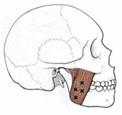
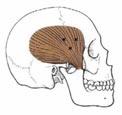
Discussion
This study included a greater proportion of female patients (80%) as compared to males (20%), which is similarly reflected in epidemiological studies.3 Despite discussion of various factors such as hormonal, psychosocial, behavioural, and biomedical, no conclusions have yet been drawn to explain the difference.4


Botulinum toxin
Botulinum toxin is a 150-kilodalton potent exotoxin produced by the grampositive anaerobic bacterium Clostridium botulinum 18 Of the seven different subtypes (A to G), BTX-A acts as a pre-synaptic neurotoxin, causing dosedependent weakness or paralysis in skeletal muscles by cleaving docking proteins on membranes, which leads to the inhibition of acetylcholine release at motor nerve endings.19 Although alpha motor neuron function is primarily affected, BTX-A may also affect gamma motor neurons, which lowers the resting tone of muscles.19 In addition, BTX-A has been shown to inhibit the release of inflammatory neuropeptides from sensory neurons such as substance P and calcitonin gene-related peptides, resulting in a reduction of inflammatory pain and a rise in pain threshold.20 Thus, these synergistic effects of BTX-A make it applicable for the management of myogenous TMD. As directed by manufacturers, 100U of freeze-dried BTX-A is reconstituted with 1ml of room temperature sterile saline and is delivered to the muscles with the use of a 1ml 31-gauge insulin needle (Figures 3 and 4). Due to the difficulty in locating the pterygoid muscles, the temporal (Figure 5) and masseter muscles (Figure 6) are typically the target muscles for the injection.13,14,17,21 Despite numerous studies, there is still a lack of consensus on the optimal dosage, varying from 50U unilaterally to 300U bilaterally.14,22 More research should be carried out to determine the optimal dosage and target sites.12
Efficacy of BTX-A treatment
Forty-five patients (75%) reported improvement in pain levels with the mean improvement of 50%. This shows promising results from the inclusion of BTXA as a first line of conservative management of myogenous TMD, and this is similarly reflected in several clinical trials. A Canadian study of 46 subjects diagnosed with TMD reported a reduction in subjective pain in 87% of the subjects after intramuscular injection of BTX-A.8 In addition, a German study of 90 patients who had not responded initially to conservative treatments reported improvement in painful symptoms for 90% of the study group.16 Similarly, another study reported reduction in pain for both study group (BTXA) and a control group (saline) that was crossed over to the BTX-A group later in the study.15 Patients suffering from TMD due to bruxism have also been reported to benefit from BTX-A in terms of improvement in range of mandibular movements.13,17 Furthermore, BTX-A has been shown to be as effective as conservative treatments such as fascial manipulation.14 However, limitations in these studies include heterogeneity of study designs, short
Journal of the Irish Dental Association | August/September 2023: Vol 69 (4) 207 PEER-REVIEWED
FIGURE 2: Reported pain levels at review appointment.
FIGURE 3: Aspiration of needle before injection (published with patient’s consent).
FIGURE 5: BTX-A injection sites to temporalis.
FIGURE 4: Injection of BTX-A into left masseter (published with patient’s consent).
50 45 40 35 30 25 20 15 10 5 0 n No improvement n Transient improvement <4 weeks n Complete resolution n Partial improvement 30 15 4 11 Improvement No improvement
FIGURE 6: BTX-A injection sites to masseter.
follow-up periods, and small sample sizes. In addition, results from two other studies have reported no relevant clinical effects of BTX-A for the management of TMD.21,22
Limitations of BTX-A treatment
Four patients reported transient relief in pain symptoms lasting four weeks. This may be due to the reversible effects of BTX-A, attributed to the regrowth of neurons that occurs after two to four months.19 This questions the longterm benefits and may indicate the need for repeated injections. Furthermore, due to its immunogenic properties, repeated exposure to BTX-A protein complex may lead to the stimulation of antibody production, causing interference to its activity.23 As a result, repeated treatment can reduce its effectiveness and add to the burden of cumulative costs. However, relief of symptoms beyond the expected pharmacokinetic duration of BTX-A has been reported, suggesting a possible neuromodulating effect of the drug at the level of the central nervous system.24 Therefore, despite promising results, recent systematic reviews have concluded that there is a need for more high-quality research with larger sample sizes, minimal bias, and longer follow-up periods.12
Adverse effects of BTX-A
The use of BTX-A is associated with various adverse effects, albeit minor and transient. One study reported adverse effects during the treatment of headache disorders, such as blepharoptosis, brow ptosis, diplopia, and muscle weakness at injection sites.25 Other adverse effects experienced by patients include flu-like symptoms, dry mouth, dysphagia, localised pain and focal muscle weakness, which may result in an asymmetrical smile.13,21,22 However, no major or long-term adverse effects have been reported.12 This has been reflected similarly in this study where no adverse effects were reported. Thus, together with the reversible nature of BTX-A, this renders the use of BTX-A as minimally invasive.
Efficacy of current conservative treatments
Conservative treatments such as behavioural therapy, physical therapy, use of occlusal appliances, and pharmacotherapy are currently regarded as the first line of treatment for the management of TMD, with success rates around 70%.9 However, there is a lack of evidence to support the effectiveness of oral splints in relieving pain in TMD.26 Furthermore, there is still great uncertainty about the effectiveness of manual therapy for TMD.27 Despite having proven effectiveness in reducing pain in TMD, long-term pharmacological treatments such as NSAIDs may be harmful due to adverse effects such as gastrointestinal effects and worsening renal function.28 Therefore, this demonstrates some limitations in the current approach to the management of TMD.
Conclusion
Currently, BTX-A is only regarded as an adjuvant treatment when standard conservative treatments have failed.29 However, with its reversible nature and high safety margins, BTX-A should be considered as a minimally invasive treatment. As a multimodal approach is recommended due to the complexity of the patho-aetiology of TMD, the combination of BTX-A with other traditional conservative treatments could potentially improve outcomes. In addition, as some studies have demonstrated, effective results from BTX-A in participants where conservative treatments have failed,8,17,18,30 means the inclusion of BTX-A in the first line of treatment could result in more favourable outcomes.
BTX-A has shown great potential and may shift the current treatment paradigm to include it as a first line of treatment for myogenous TMD. However, there remains the need for more high-quality research with larger sample sizes, minimal bias, and longer follow-up periods.
References
1. Schiffman E, Ohrbach R, Truelove E, et al. Diagnostic Criteria for Temporomandibular Disorders (DC/TMD) for Clinical and Research Applications: recommendations of the International RDC/TMD Consortium Network and Orofacial Pain Special Interest Group. J Oral Facial Pain Headache. 2014;28(1):6-27.
2. Dworkin SF. The OPPERA study: Act One. J Pain. 2011;12(11):1-3.
3. Bitiniene D, Zamaliauskiene R, Kubilius R, et al. Quality of life in patients with temporomandibular disorders – a systematic review. Stomatologija. 2018;20(1):3-9.
4. Macfarlane TV, Gray RJM, Kincey J, et al. Factors associated with the temporomandibular disorder, pain dysfunction syndrome (PDS): Manchester casecontrol study. Oral Dis. 2001;7(6):321-30.
5. Bell WE. Temporomandibular Disorders: Classification, Diagnosis, Management. 2nd ed. Chicago: Yearbook Medical Publishers Inc; 1986.
6. Hasanain F, Durham J, Moufti A, et al. Adapting the diagnostic definitions of the RDC/TMD to routine clinical practice: a feasibility study. J Dent. 2009;37(12):955-962.
7. Shah JP, Thaker N, Heimur J, et al. Myofascial trigger points then and now: a historical and scientific perspective. Pm R. 2015;7(7):746-761.
8. Freund B, Schwartz M, Symington JM. Botulinum toxin: new treatment for temporomandibular disorders. Br J Oral Maxillofacial Surg. 2000;38(5):466-471.
9. Greene CS. Managing the care of patients with temporomandibular disorders: a new guideline for care. J Am Dent Assoc. 2010;141(9):1086-1088.
10. List T, Axelsson S. Management of TMD: evidence from systematic reviews and metaanalyses. J Oral Rehabil. 2010;37(6):430-451.
11. Galdon MJ, Durá E, Andreu Y, et al. Multidimensional approach to the differences between muscular and articular temporomandibular patients: coping, distress, and pain characteristics. Oral Surg Oral Med Oral Pathol Oral Radiol Endod. 2006;102(1):40-46.
12. Thambar S, Kulkarni S, Armstrong S, et al. Botulinum toxin in the management of temporomandibular disorders: a systematic review. Br J Oral Maxillofac Surg. 2020;58(5):508-519.
13. Guarda-Nardini L, Manfredini D, Salamone M, et al. Efficacy of botulinum toxin in treating myofascial pain in bruxers: a controlled placebo pilot study. Cranio. 2008;26(2):126-135.
14. Guarda-Nardini L, Stecco A, Stecco C, et al. Myofascial pain of the jaw muscles: comparison of short-term effectiveness of botulinum toxin injections and fascial manipulation technique. Cranio. 2012;30(2):95-102.
15. Patel AA, Lerner MZ, Blitzer A. IncobotulinumtoxinA injection for temporomandibular joint disorder. Ann Otol Rhinol Laryngol. 2017;126(4):328-333.
16. Von Lindern JJ, Niederhagen B, Bergé S, et al. Type A botulinum toxin in the treatment of chronic facial pain associated with masticatory hyperactivity. J Oral Maxillofac Surg. 2003;61(7):774-778.
17. Connelly ST, Myung J, Gupta R, et al. Clinical outcomes of Botox injections for chronic temporomandibular disorders: do we understand how Botox works on muscle, pain, and the brain? Int J Oral Maxillofac Surg. 2017;46(3):322-327.
18. Simpson LL. The origin, structure, and pharmacological activity of botulinum toxin. Pharmacol Rev. 1981;33(3):155-188.
19. Filippi GM, Errico P, Santarelli R, et al. Botulinum A toxin effects on rat jaw muscle spindles. Acta Otolaryngol. 1993;113(3):400-404
20. Durham PL, Cady R. Regulation of calcitonin gene-related peptide secretion from
208 Journal of the Irish Dental Association | August/September 2023: Vol 69 (4) PEER-REVIEWED
trigeminal nerve cells by botulinum toxin type A: implications for migraine therapy. Headache. 2004;44(1):35-42.
21. Nixdorf DR, Heo G, Major PW. Randomized controlled trial of botulinum toxin A for chronic myogenous orofacial pain. Pain. 2002;99(3):465-473.
22. Ernberg M, Hedenberg-Magnusson B, List T, et al. Efficacy of botulinum toxin type A for treatment of persistent myofascial TMD pain: a randomized, controlled, doubleblind multicenter study. Pain. 2011;152(9):1988-1996.
23. Bogucki ZA, Kownacka M. Clinical aspects of the use of botulinum toxin type A in the treatment of dysfunction of the masticatory system. Adv Clin Exp Med. 2016;25(3):569-573.
24. Mor N, Tang C, Blitzer A. Temporomandibular myofacial pain treated with botulinum toxin injections. Toxins. 2015;7(8):2791-2800.
25. Silberstein SD, Göbel H, Jensen R, et al. Botulinum toxin type A in the prophylactic treatment of chronic tension-type headache: a multicentre, double-blind, randomized, placebo-controlled, parallel-group study. Cephalalgia. 2006;26(7):790800.
26. Fouda AAH. No evidence on the effectiveness of oral splints for the management of temporomandibular joint dysfunction pain in both short and long-term follow-up systematic reviews and meta-analysis studies. J Korean Assoc Oral Maxillofac Surg. 2020;46(2):87-98.
27. Armijo-Olivo S, Pitance L, Singh V, et al. Effectiveness of manual therapy and therapeutic exercise for temporomandibular disorders: systematic review and metaanalysis. Phys Ther. 2016;96(1):9-25.
28. Harirforoosh S, Asghar W, Jamali F. Adverse effects of nonsteroidal antiinflammatory drugs: an update of gastrointestinal, cardiovascular and renal complications. J Pharm Pharm Sci. 2013;16(5):821-847.
29. Patel J, Cardoso JA, Mehta S. A systematic review of botulinum toxin in the management of patients with temporomandibular disorders and bruxism. Br Dent J. 2019;226(9):667-672.
30. Abboud WA, Hassin-Baer S, Joachim M, et al. Localized myofascial pain responds better than referring myofascial pain to botulinum toxin injections. Int J Oral Maxillofac Surg. 2017;46(11):1417-1423.
CPD questions
To claim CPD points, go to the MEMBERS’ SECTION of www.dentist.ie and answer the following questions:
1. Which of the following statements about the incidence of temporomandibular disorder (TMD) is true?
l A. It is more common in the male population.
l B. It is more common in the female population.
l C. It is equally common in both male and female populations.
l D. It is a rare disorder.
2. What is botulinum toxin?
3. How does botulinum toxin-A cause paralysis or weakness in skeletal muscle?
l A. It is a potent exotoxin produced by the bacterium Clostridium botulinum
l B. It is a potent exotoxin produced by virus Clostridium botulinum
l C. It is a potent exotoxin produced by fungal spore Clostridium botulinum
l D. It is a potent exotoxin produced artificially in a chemical lab.
l A. It acts directly on the nucleus of the muscle cell.
l B. It kills the muscle cell permanently.
l C. It blocks glycogen to the sarcoplasm of the muscle cell.
l D. It cleaves docking protein on membranes, which leads to inhibition of acetylcholine release.
Journal of the Irish Dental Association | August/September 2023: Vol 69 (4) 209 PEER-REVIEWED
CPD
Costello Award 2023
Students from Cork University Dental School and Hospital and the Dublin Dental School and University Hospital presented the following two abstracts at the IDA Annual Conference 2023 for consideration for the Costello Award. The winners of the award were Fargol Nowghani and Laith Ronan Aljohmani of the Dublin Dental University Hospital.
Evaluating the accessibility and distribution of Health Service Executive dental clinics in the Republic of Ireland
Nowghani F, Aljohmani LR
Background
The accessibility of quality oral healthcare is largely influenced by both social and environmental factors, which tend to vary across most populations.1 Low-income and rural communities, already experiencing higher reported prevalence of oral disease,2,3,4 are often further disadvantaged by the availability of and travel distance to oral health services.5 The Health Service Executive (HSE) provides some free dental care to children under 16 via the school dental programme, emergency dental care for children under 16, orthodontic treatment for children meeting national guideline criteria, and routine dental treatment for adults with special care dental needs. Free dental services are available to adults over 16 with a medical card through the Dental Treatment Services Scheme (DTSS) operated by general dental practitioners (GDPs). Medical card holders are directed to HSE dental clinics to obtain lists of participating dentists in their locales, and for referrals in the case of special needs and orthodontics.5 However, contact information for reaching out to HSE dental clinics is reported to be variable, and with a limited range of treatments available and significant budget cuts over the years, many dentists report recently withdrawing from the DTSS scheme. Patients’ access to dental care in Ireland could be impacted by the absence of clear up-to-date information about the availability and location of dental care that reflects recent changes. This study aimed to assess accessibility of dental services in Ireland by geography, and assess the availability of online information with respect to dental services.
Methods
The HSE’s website6,7 was utilised to collect HSE dental clinic information and listings. Locations were then mapped using the QGIS tool.8 Data from the Central Statistics Office were used to retrieve information regarding population demographics.9
Findings
n Based on the database provided by the HSE, the distribution of HSE dental clinics listed tended to concentrate in highly populated counties such as Cork, Donegal and Dublin. No HSE dental clinics appeared to be listed for Cavan, Kilkenny, Leitrim, Louth, Monaghan, and Roscommon.
n Within Ireland, 91% of areas had access to a HSE dental clinic within a 60minute drive. Some areas located along the western coast required longer than a 60-minute drive to reach a clinic. Cork, Limerick and Dublin appeared to have areas with the shortest travel time to a HSE dental clinic, due to their higher density of clinics.
n Only 2.4% of areas in Ireland had access to a listed HSE dental clinic within two
hours by public transport. Major cities with a higher density of clinics and public transport stops, such as Dublin, Cork, and Limerick, were within two hours’ travel distance by public transport.
n Most clinics listed appeared to be located in the Dublin City region, with fewer in the outskirts. Some 52.4% of areas in Dublin had access to a HSE dental clinic within 60 minutes by public transport, while 22.7% of areas in Dublin had access to a HSE dental clinic within 30 minutes by walking.
Conclusions
We can conclude that in most regions of Ireland, residents are within 60 minutes of commuting by car to HSE dental clinics. This may be reasonable if they have access to a private vehicle and are not limited by county borders. For individuals dependent on public transport, many will need to make longer journeys to reach a HSE clinic.
This study only included HSE dental facilities that were listed on the HSE website. Although it may be argued that this provided an incomplete picture, we suggest that the availability of information about location of dental services is a facilitator of access. Our study found little information available on the HSE clinic wait times for appointments or hours of operation. In many instances addresses and contact details were not posted. Additionally, no list of local dental practices participating in the DTSS was included on the HSE website. For counties where HSE dental clinics were not listed, guidance on how to access care was lacking. Our study provides evidence that the public’s access to information about availability of local dental care could be impacted by the absence of a clear, up-to-date, and publicly available register of HSE dental clinics and dentists taking part in the DTSS.
The Smile Agus Sláinte national oral health policy highlights the importance of adopting a “primary care approach”,10 where the majority of care is provided by local dental practices and special oral healthcare is delivered from HSE community services or advanced oral healthcare centres. Our project highlights the need for accurate and readily available information for people to access these services.
Acknowledgements
Special thanks to the team of dental students who conducted the study: Tara Breen, Annie Yuting Chen, Richard Collins, Charles-Minh G. De Percin, Isaac Yuheng Liu, and Eileen Maria Pop.
A special thanks to our mentor: Maria Van Harten.
References
1. Bahannan SA, Eltelety SM, Hassan MH, Ibrahim SS, Amer HA, El Meligy OA, et al. Oral and dental health status among adolescents with limited access to dental care services in Jeddah. Dentistry J (Basel). 2018;6(2):15.
2. World Health Organization. Oral Health. FACT Sheet No 318. WHO: Geneva, Switzerland; 2012.
3. Al Darwish MA, El Ansari WB, Bener A. Prevalence of dental caries among 12-14-year-old children in Qatar. Saudi Dent J. 2014;26(3):115-125.
4. Hooley M, Skouteris H, Boganin C, Satur J, Kilpatrick N. Parental influence and the development of dental caries in children aged 0-6 years: a systematic review of the literature. J Dent. 2012;40(11): 873-885.
5. Health Service Executive. Dental services. Available from: https://www.hse.ie/eng/services/list/2/dental/5
6. Health Service Executive. Dental Circular – DTSS Changes. Available from: https://www.hse.ie/eng/staff/pcrs/circulars/dental/dental-circular-13-2022-dtsschanges-1-may-2022.pdf
COSTELLO AWARD 2023
210 Journal of the Irish Dental Association | August/September 2023: Vol 69 (4)
WINNER
7. Health Service Executive. Local Health Offices. Available from: https://www.hse.ie/eng/services/list/1/lho/
8. QGIS Geographic Information System. Open Source Geospatial Foundation Project. 2015.
9. Central Statistics Office. Census of Population 2016 – Profile 3 An Age Profile of Ireland
Average Age and Dependency. Available from: https://www.cso.ie/en/releasesandpublications/ep/p-cp3oy/cp3/aad/
10. Kavanagh D, O’Mullane D, O’Connell B, Barry M, Dougal A, Madden D, et al. Smile agus Sláinte – National Oral Health Policy. Available from: https://www.gov.ie/en/publication/90687b-smile-agus-slainte-national-oral-healthpolicy/
Treating dento-alveolar infection in the primary dentition
Seif A, Nanji M
Abstract
This summary provides an overview of global oral health data on primary caries, highlighting caries prevalence and the impact of sugar consumption based on a World Health Organization (WHO) report. The research aimed to explore the most suitable treatment for chronic dento-alveolar infections related to carious primary teeth, stressing caries risk consideration and parental involvement. A comprehensive search yielded seven studies on primary teeth treatments in healthy children under 14 years. While the study findings are inconclusive, systematic reviews favour pulpectomies and pulpotomies, recommending against extractions to prevent space loss and malocclusion. European Association of Paediatric Dentistry (EAPD) guidance offers valuable recommendations, but further research is needed. Investigating materials mimicking root resorption rates and assessing cost-effectiveness and patient quality of life are important. Randomised controlled trials (RCTs) with detailed interventions and longer follow-ups will enhance the knowledge base and inform dental practice.
Background
The WHO Global Oral Health Status Report estimated approximately 515 million cases of caries in primary teeth, and untreated caries in permanent teeth is a common health condition. Sugar consumption is a significant risk factor for caries according to the WHO. Paediatric dentistry focuses on assessing caries risk and providing treatments like pulp therapy for chronic dento-alveolar infections related to carious primary teeth, considering various factors, and involving parents in treatment decisions.
Clinical scenario
As a paediatric dentist, you are faced with a seven-year-old patient presenting with a heavily carious upper right second primary molar identified as a chronic dentoalveolar infection, currently asymptomatic. You must carefully evaluate treatment options, ranging from restorations with pulp therapy to extraction or no treatment, taking into consideration potential risks such as pain, systemic infection, space loss, impaired quality of life, disrupted growth, speech issues, and dental phobia/anxiety in the child.
Methods
A comprehensive search using PubMed and EBSCOhost was conducted with specific search terms and strategies. After applying limitations and
inclusion/exclusion criteria, a total of seven studies focusing on primary teeth treatments and outcomes in healthy children under 14 years were included in the critical appraisal.
Findings
The research question regarding the best treatment for chronic dento-alveolar infection related to carious primary teeth remains unanswered, as no single study compared all interventions. However, several systematic reviews suggest that treatments such as pulpectomies and pulpotomies are recommended for successful outcomes, with pulpectomies being preferred for non-vital primary molars. Extractions should be avoided if possible, to prevent space loss and potential malocclusion in the permanent dentition. Overall, the EAPD guidance provides valuable recommendations, emphasising the use of the least invasive and most predictable treatment approach. Further research is needed to compare treatments comprehensively, especially considering teeth with root resorption, and the inclusion of lesion sterilisation/tissue repair as an option in the EAPD guidance would be beneficial.
Conclusions
Future dental practice should adhere to the EAPD guidance, supported by strong research on various treatment options for deep dentinal carious lesions. Primary teeth treatments and materials require further investigation to reduce the risk of early exfoliation and orthodontic-related problems. Additionally, costeffectiveness, patient quality of life, and burden of care should be explored for better compliance. To improve research homogeneity, more RCTs with detailed intervention descriptions and longer follow-ups are necessary, and comparisons of longevity for vital pulp therapies are recommended.
Further reading
1. Coll JA, Vargas K, Marghalani A, Chen C-Y, AlShamali S, Dhar V, Crystal YO. A systematic review and meta-analysis of nonvital pulp therapy for primary teeth. Pediatr Dent 2020;42(4):256-272.
2. Duggal M, Gizani S, Albadri S, Krämer N, Stratigaki E, Tong HJ, et al. Best clinical practice guidance for treating deep carious lesions in primary teeth: an EAPD policy document. Eur Arch Paediatr Dent. 2022;23(5):659-666.
COSTELLO AWARD 2023 Journal of the Irish Dental Association | August/September 2023: Vol 69 (4) 211
Influence of print orientation on the intaglio surface accuracy (trueness and precision) of tilting stereolithography definitive resin-ceramic crowns
Revilla-León M, Supaphakorn A, Barmak AB, Rutkunas V, Kois JC.
Statement of problem: Vat-polymerisation tilting stereolithography (TSLA) technology can be selected for fabricating definitive crowns; however, how the printing variables, including print orientation, influences its manufacturing accuracy remains unclear.
Purpose: The purpose of this in-vitro study was to assess the influence of different print orientations (0, 45, 75, or 90 degrees) on the intaglio surface accuracy (trueness and precision) of TSLA definitive resin-ceramic crowns.
Materials and methods: The virtual design of an anatomic contour molar crown was obtained in standard tessellation language (STL) file format and used to manufacture all the specimens by using a TSLA printer (DFAB Chairside) and a resin-ceramic material (Irix Max Photoshade single-use cartridges). Four groups were created depending on the print orientation used to manufacture the specimens: 0- (Group 0), 45- (Group 45), 70- (Group 75), and 90-degree (Group 90) print orientation (n=30). Each specimen was digitised by using a laboratory scanner (T710) according to the manufacturer's scanning protocol. The reference STL file was used as a control to measure the volumetric discrepancies of the intaglio surface with the digitised specimens by using the root mean square (RMS) error calculation. The trueness data were analysed by using 1-way ANOVA followed by post-hoc pairwise multiple comparison Tukey tests, and precision data were analysed using the Levene test (α=.05).
Results: Significant mean trueness (P<.001) and precision (P<.001) value discrepancies were found among the groups tested. Additionally, all the groups were significantly different from each other (P<.001), except for the 45- and 90degree groups (P=.868). Group 0 showed the best mean trueness and precision values, while the Group 90 demonstrated the lowest mean trueness and precision values.
Conclusions: The print orientations tested influenced the intaglio surface trueness and precision values of the TSLA definitive resin-ceramic crowns.
J Prosthet Dent. 2023;S0022-3913(23)00186-5.
Interaction of periodontitis and orthodontic tooth movement – an in vitro and in vivo study
Rath-Deschner B, Nogueira AVB, Beisel-Memmert S, et al.
Objectives: The aim of this in-vitro and in-vivo study was to investigate the interaction of periodontitis and orthodontic tooth movement on interleukin (IL)6 and C-X-C motif chemokine 2 (CXCL2).
Materials and methods: The effect of periodontitis and/or orthodontic tooth movement (OTM) on alveolar bone and gingival IL-6 and CXCL2 expressions was studied in rats by histology and RT-PCR, respectively. The animals were assigned to four groups (control, periodontitis, OTM, and combination of periodontitis and OTM). The IL-6 and CXCL2 levels were also studied in human gingival biopsies from periodontally healthy and periodontitis subjects by RT-PCR and immunohistochemistry. Additionally, the synthesis of IL-6 and CXCL2 in response to the periodontopathogen Fusobacterium nucleatum and/or mechanical strain
was studied in periodontal fibroblasts by RT-PCR and ELISA.
Results: Periodontitis caused an increase in gingival levels of IL-6 and CXCL2 in the animal model. Moreover, orthodontic tooth movement further enhanced the bacteria-induced periodontal destruction and gingival IL-6 gene expression.
Elevated IL-6 and CXCL2 gingival levels were also found in human periodontitis. Furthermore, mechanical strain increased the stimulatory effect of F. nucleatum on IL-6 protein in vitro
Conclusions: Our study suggests that orthodontic tooth movement can enhance bacteria-induced periodontal inflammation and thus destruction, and that IL-6 may play a pivotal role in this process.
Clinical relevance: Orthodontic tooth movement should only be performed after periodontal therapy. In case of periodontitis relapse, orthodontic therapy should be suspended until the periodontal inflammation has been successfully treated and thus the periodontal disease is controlled again.
Clin Oral Investig. 2022;26(1):171-181.
Sônego MV, Neto CLMM, Dos Santos DM, et al
Objectives: The aim of this study was to compare the direct relining technique with the indirect relining technique in relation to quality of life, satisfaction with the relining, occlusal force, and halitosis of users of acrylic complete dentures.
Materials and methods: Twenty bimaxillary edentulous individuals were selected. They had to use the same pair of complete dentures for a minimum of one year and a maximum of five years. The subjects were randomly divided in groups of direct relining and indirect relining of the inferior denture (n=10). Both groups received the same silicone-based relining. The clinical tests verified the quality of life (Oral Health Impact Profile in edentulous individuals), the satisfaction with the relining, the occlusal force, and halitosis. The tests (halitosis and occlusal force) were performed initially (before the relining), immediately after the relining, and 30, 60, 90, and 180 days after the relining. The questionnaires (quality of life and satisfaction with the relining) were performed initially (before the relining), and 30, 60, 90, and 180 days after the relining.
Statistical analysis: Analysis of variance and the Tukey test were used (p< 0.05). Results: There was no statistical difference comparing the two techniques in all the evaluations (p< 0.05). There was a significant statistical difference for the factor of time in all clinical tests for each relining technique (p< 0.05). The quality of life and satisfaction with the relining increased significantly 30 days after the relining when compared with the initial time point, for both techniques (p< 0.05). The occlusal force increased significantly after 90 and 180 days when compared with the initial time point, for both techniques (p< 0.05). Halitosis decreased significantly immediately after the relining when compared with the initial time point, for both techniques (p< 0.05).
Conclusion: Independent of the relining technique used, there was an increase in the quality of life, satisfaction with the relining, and occlusal force, as well as a reduction in the level of halitosis. Both techniques generated similar results and therefore can be options in clinical practice.
Eur J Dent. 2022;16(1):215-222.
212 Journal of the Irish Dental Association | August/September 2023: Vol 69 (4) NEW DENTAL SCIENCE
Quality of life, satisfaction, occlusal force, and halitosis after direct and indirect relining of inferior complete dentures
SITUATIONS VACANT Associates
Kilkenny practice: part-time associate two/three days a week. Experience essential. Private/S/W, fully computerised, scanner, digital X-ray. Contact Parkmanorservices@gmail.com.
South Dublin: superb opportunity, full book, for a progressive, experienced, caring associate in established private practice. Excellent support staff/principal. Implant dentistry, sedation, specialist orthodontics. Full mentoring provided. Long-term view preferable. Send CV to niall@innovativedental.com.
West Limerick: associate required to replace departing colleague in busy practice. Practice has in-house prosthodontist, orthodontist and hygienists. Mentorship available for the correct candidate. Experienced support staff. Friendly working environment. Please send CV to Shane Mullane at info@mullanedental.ie.
Associate required for busy dental practice in Cavan Town. Modern clinic and friendly staff. Send CV to churchstdental@gmail.com.
Dublin 15: hardworking and motivated dental associate required. Full time. Guaranteed full books. Great atmosphere. Supportive staff. Mentoring by senior dentist, if required. Please send CV to bodekerpeter@gmail.com.
Experienced dental associate required for modern and very busy fully private practice in north Dublin. Flexible hours, full- or part-time arrangements considered. Experienced, supportive team. Endodontist and periodontist working on site. Digital scanner available. Mentoring available. Contact northdublindentalassociate@gmail.com.
Associate required for well-established modern practice close to Galway City. Excellent support staff and mentoring principal. New graduates welcome. Excellent opportunity for a well-motivated and caring dentist. Four-day working week for an ideal work/life balance. Contact cathalmangan70@gmail.com.
Associate required for thriving modern dental practice based in Roscrea, Co Tipperary. Excellent support staff and positive work environment. Private and PRSI, no medical card. Please send your CV to sarahrymer@expressionsclinic.com.
Full-time associate to join a modern progressive surgery. Implant and restorative mixed practice in Westport, Co. Mayo. Fully equipped surgeries with intra-oral
Classified advertisements are accepted via the IDA website –www.dentist.ie – only, and must be pre-paid. The deadline for receipt of advertisements for inclusion in the next edition is Friday, September 15, 2023. Classified ads placed in the Journal are also published on www.dentist.ie for 12 weeks. Please note that all adverts are subject to VAT at appropriate rate.
Advert size Members Non-members
up to 25 words ¤123 ¤246
26 to 40 words ¤147 ¤295
The maximum number of words for classified ads is 40. If the advert exceeds 40 words, then please contact: Think Media, The Malthouse, 537 North Circular Road, Dublin 1. Tel: 01-856 1166 Fax: 01-856 1169 Email: paul@thinkmedia.ie
Please note that all classified adverts MUST come under one of the following headings:
4 Situations wanted 4 Situations vacant
4 Practices for sale/to let 4 Practices wanted
4 Equipment for sale/to let
Classified adverts must not be of a commercial nature. Commercial adverts can be arranged by contacting Paul O’Grady at Think Media.
scanner, OPG, CT, full digital workflow. Full clinical support with experienced friendly team. Busy list and excellent earning potential. Contact Shane@mayodentalclinic.com.
Experienced associate required in modern practice in Westmeath, 30 minutes from M50. Excellent earning potential, great patients and support staff. IDC registered and eligible to work in Ireland. Flexible start for the right candidate. Please send CV to aidan@kinnegaddental.ie.
Drogheda, Co. Louth: an opportunity has arisen for an experienced associate dentist to join our progressive team two days per week, commencing August. Competent clinical and administrative supports. Digital workflow. Please send CV to angelamkearney@gmail.com.
Mallow, Co. Cork: family dental practice seeks a dental associate with experience to join our team. Part-time position with immediate start. We have a great working environment with very experienced nursing staff. Contact mallowdentist@gmail.com.
Clonakilty: part-time dental associate for busy practice. One or two days. Generous remuneration. Contact Stephen at sjhennessy10@gmail.com.
Associate dentist required in new busy Meath practice in medical centre. Primescan, digital radiographs and OPG. Lovely team, mentorship for right candidate. Mostly private and PRSI, some GMS patients. 50% remuneration. No weekends, full-time preferable. Contact fiacloirnua@gmail.com.
Cork: associate wanted in newly renovated, four-surgery practice in Youghal. Easy commute from Cork City. Fully computerised, excellent support staff, excellent remuneration. Please send CV to youghaldentist@gmail.com.
Full-time associate required for busy practice in Ongar village, starting September. 50% remuneration, excellent staff and support, fully digital. Please send CV to ongar.dental@gmail.com or contact 018263923.
Tralee, Co. Kerry: associate dentist to join our well-established practice two/three days a week from September. Fully computerised, implants, Cerec, intraoral scanner, digital X-ray, hygienist. Great team in a modern practice. Contact pmorandental@gmail.com.
Full-time dental associate required for busy dental clinic in Dublin 12 to replace colleague moving abroad in September. Full range of general treatments, modern, computerised surgery. OPG and Cerec system. Excellent support. Basic endo and prostho experience required. 50% split. Contact info@cleardentalcare.ie.
Associate dentist with minimum two years of experience required to join our experienced team in a long-standing, busy practice in north Dublin, close to the city centre. On-site parking, easily accessible by public transport. Flexible hours. Contact inidapol@gmail.com.
Associate dentist required for specialist/general state-of-the-art, busy, modern and friendly private practice in Naas. We offer great remuneration with flexible working hours and great team support. If interested, send your CV to info@naasdental.ie. Dentists required for associate position from October 2023 in north Dublin practice. Flexible hours. Please send CV to northcitydental@gmail.com.
Dublin 13: full- or part-time dental associate position in busy, fully private dental practice. State-of-the-art facilities with 3Shape scanner, OPG, Exact software and digital X-rays. Endodontist, periodontist and hygienist present. Flexible working times. Excellent remuneration. Contact northdublindentalassociate@gmail.com.
Kilcullen Dental is looking for an experienced and enthusiastic associate to join our team. Initially two/three days, likely to become full time. No weekends. IDC registration required. Very busy, PRSI/private patients. Great opportunity for the right associate. Contact dc131066@gmail.com.
Dentist required for our new, modern, fully private practice in Kilcock, Co. Kildare. State-of-the-art equipment with Primescan, 3Shape scanners and CBCT. Position suits an enthusiastic associate who wishes to develop with a progressive team. Excellent remuneration. Contact deirdre@thejamesclinic.com.
Dentist required for our busy, modern, fully private practice in Enfield, Co. Meath. State-of-the-art equipment with Primescan, 3Shape scanners and CBCT. Position
Journal of the Irish Dental Association | August/September 2023: Vol 69 (4) 213 CLASSIFIEDS
suits an enthusiastic associate who wishes to develop with a progressive team. Excellent remuneration. Contact deirdre@thejamesclinic.com.
Sandyford, south Dublin: Locum dentist required for busy dental practice. August 1-14. Also part-time, permanent associate position available for suitable candidate. Fluent English required. Please forward CV to sandyfordhall.dentist@gmail.
Dentists
Dentist required for locum work one to two flexible days. Friendly, modern clinic in Kilkenny. Private/PRSI. 50% remuneration. Also, Invisalign provider required. Contact dentistkilk22@gmail.com.
Portobello Dental Clinic is looking for a full-time GDP to replace a departing colleague. Fully private, Primescan and iTero available. Minimum three years’ clinical experience. Nitrous oxide sedation and IV sedation provided. Visiting orthodontist, endodontist and oral surgeon. Contact helen@portobellodental.com.
Dentist required for Colm Smith Dental and Specialist Centre Monaghan. Opportunity to work with some of Ireland’s finest specialists, dentists, hygienists and excellent support staff. Full- and part-time applicants considered. Contact luciagsmith@gmail.com.
We are looking to recruit a dentist to join our busy practice. Experience is desirable. Excellent support. Established book. Dentist owner working on site. If interested, please send a CV to us at bddentalreception@gmail.com.
Part-time dentist wanted to work Wednesdays, Thursdays and Saturdays for busy computerised dental practice in Sandyford. Private and PRSI patients, great staff. Must be registered with Irish Dental Council. Please email CVs to blackglendental@gmail.com.
Part-time/full-time dentist required to join our dental practice in Co. Offaly. Fully computerised and digitalised practice. Great and supportive team. Excellent earning potential. Must be registered with Irish Dental Council. New graduates are welcome. For the ideal candidate, a work permit can be arranged. Please reply to practicemanagerpd@gmail.com.
Full-time Dublin city centre role available for a dentist in a well-established, friendly practice. Excellent support staff and facilities. Would suit an enthusiastic and motivated dentist. Contact careerscamdendental@gmail.com.
North Galway/south Mayo: dentist wanted in modern, fully private practice. Own surgery, all high-tech equipment. OPG, scanner, etc. Flexible working conditions. Send CV to obeirne1@hotmail.com.
Dental Care Ireland: our modern established practice has a high-earning, part-time opportunity for a dentist. Fully flexible hours, strong established patient books. Must have at least two years’ experience, IDC registration, and be eligible to work in Ireland. Contact careers@dentalcareireland.ie.
Dental Care Ireland: our Tullamore established practice has a high-earning, flexible hours opportunity for a dentist. Strong established patient book. Must have at least two years’ experience, IDC registration, and be eligible to work in Ireland. Excellent support team in place. Contact careers@dentalcareireland.ie.
Our modern practices have a high earning opportunity with established patient books and excellent support team. Experience preferred, but new graduates welcome. Candidates must have IDC registration and be eligible to work in Ireland. Contact eamonnnoonan@hotmail.com.
Dental Care Ireland Galway: part/full-time dentist role, fully flexible hours. Our experienced support team are in place with busy patient books on offer. High earning opportunity. Experience an advantage, IDC registration and eligible to work in Ireland. Contact careers@dentalcareireland.ie.
Part-time/full-time general dentist required in fully equipped mixed implant and restorative practice in Westport, Mayo. Hi-tech, IO scanners, CT/OPG, fully computerised. Experienced support staff. Excellent remuneration. Learn to restore implants and advanced restorative techniques. IDC registration required. Contact Shane@mayodentalclinic.com.
Celbridge, Co. Kildare: great opportunity for a long-term position in a state-of-theart facility with an experienced, relaxed and friendly team. Contact poboyleriverside@gmail.com.
Experienced dentist required for busy dental practice in south-east Galway. Private/PRSI. Full book guaranteed. Excellent remuneration. Flexible days/working hours. Positive working environment. Friendly patient base. Contact drrothwelldental@gmail.com.
North Cork: dentist required to replace retiring colleague. 20-minute commute to city. Non-corporate position, well-established family practice. Great team, newly refurbished practice, fully computerised (SOE) and OPG. Three days per week. Contact suzannecurran@aol.com.
Very busy dental implant practice in Dublin looking for a dentist who has experience with dental implants. Fully digital, CBCT, IO scanners, OPG and Nobel X-Guide. Experienced principal. All private/PRSI patients. No weekends or late evenings. Contact seanosms@gmail.com.
Experienced dentist required to join our team in a longstanding, busy practice in Galway. Full book. Experienced staff. Great work environment. High earning opportunity. Experience an advantage, IDC registration and eligible to work in Ireland. Email practicemanagergalwaycity@gmail.com.
General dentist, Kilkenny City: dentist required two to five days per week. Excellent earning potential. Rapidly expanding, private practice. General dentistry. Cosmetic dentistry. Endodontics. Excellent development opportunities. Ideal candidate should have two to three years’ experience and be registered with the IDC. Contact brianjpagni@gmail.com.
Excellent experienced dentist required. General private dentistry. Rare opportunity to join a superb five-surgery practice. Three specialists. Support from our staff team. Very best equipment. Part-time initially. CV and references essential. Dublin airport/centre 20km. Contact Conor.irwin@ratoathdental.ie.
General dentist required in Dublin, two to five days per week. Excellent earning potential. Rapidly expanding private practice. General dentistry. Cosmetic dentistry. Endodontics. Excellent development opportunities. Ideal candidate should have two to three years’ experience and be registered with the IDC. Contact brianjpagni@gmail.com.
Experienced dentists required for all our clinics in Roscrea, Limerick, and Blackrock, Co. Dublin. Partnership opportunities available. Busy modern clinics with excellent support staff. Contact jobs@shieldsdentalclinic.ie.
D4Dentist on Baggot St is looking for a biomimetic dentist to join our growing team. Must wear loupes, use rubber dam and routinely use photography. Invisalign desirable. Experienced team dedicated to excellence. Itero, 3Shape, Cerec, OPG on site. Contact dentistjobd4@gmail.com.
Navan: experienced dentist required, four to five days, three-surgery, general private practice. Excellent development opportunities. Implants, periodontist, hygienists, sedation, fully digital. Ideal candidate should have two to three years’ experience and a special interest in restorative dentistry. Contact gh@bridgeviewdental.ie.
Skerries: We are a private general/specialist practice, with highly equipped surgeries, delivering quality service alongside an excellent support team. We are seeking a general dentist, preferably experienced in restorative field, on a part-time basis. Contact yoursmile2612@gmail.com.
Dentist for established independent private practice in Kildare Town. Practice income 95% private with PRSI. Implant, sedation, orthodontics and oral surgery provided with free mentoring. Fully computerised with SOE digital X-rays, OPG and CBCT intra-oral scanner. New graduates welcome. Contact dave_gwyer@hotmail.com.
Donegal. Part-time/full-time dentist required for busy modern practice. Computerised SOE, digital X-rays. Excellent staff/remuneration. Private/PRSI/medical card. Email twintowndentist@gmail.com.
Dental Care Ireland, Ennis: part time, high earning opportunity to join our modern, established practice. Flexible options, strong established books on offer. Experienced support team in place. Eligible to work in Ireland and IDC registered.
CLASSIFIEDS 214 Journal of the Irish Dental Association | August/September 2023: Vol 69 (4)
Indemnity insurance is required. Contact careers@dentalcareireland.ie.
Dublin city centre: full-time role available in a well-established and friendly dental practice. Excellent support staff and facilities. Would suit an enthusiastic and motivated dentist. Contact careerscamdendental@gmail.com.
Athlone: dentist required for private practice. Private and PRSI patients, OPG, CBT, hygienist, full support staff, excellent remuneration. Experience preferred. Part/full-time. Email reception@mearesdental.ie.
Cootehill/Monaghan: Colm Smith Dental invites a dentist to join our team of specialists, oral surgeon, specialist orthodontist, endodontist, 14 dentists, five hygienists and excellent support staff. Accommodation and excellent terms for the right candidate, full book assured. Full/part-time considered. Contact drcolmsmith@gmail.com.
Dublin 5: we have an exciting opportunity for a part-time dentist to work in our fully digitalised practice. It's an excellent opportunity to work in a multidisciplinary team and grow your career. Contact manager@mayparkdental.ie.
Dental Care Ireland – great opportunity for a dentist to join our established practice in north Dublin. Busy patient book, high earning opportunity. Flexible hours on offer in our modern practice. Experienced, friendly clinical support team. IDC registration and eligible to work in Ireland. Contact careers@dentalcareireland.ie.
Dental Care Ireland, Kilkenny – dentist, established modern practice with strong patient book. Flexible days/hours, high earning opportunity. Registered with IDC and eligible to work in Ireland essential. Experienced, friendly clinical support team already in place. Contact careers@dentalcareireland.ie.
Lucey Dental in Greystones is seeking an experienced dentist (part or full time). Become part of a multidisciplinary team in state-of-the-art practice. Candidate will take over an existing fully private patient list. Contact manager@luceydental.ie.
Full/part-time dentist required for a busy practice in Arklow, Co. Wicklow. Practice is fully computerised. Highly supportive team. Excellent earning potential. Email CV to drgiri26@gmail.com.
Athy, Co. Kildare: Experienced dentist required for a busy practice. Full- and parttime applicants considered. Email CV to ppehealthcare2020@gmail.com.
Locums
Locum dental surgeon required to cover leave August 1-23 in busy tourist Kerry town. Very modern well-equipped surgery with great support staff. Possibility of continuing part time afterwards. Contact info@dingledental.com.
Sandyford, south Dublin: Locum dentist required for busy dental practice. August 1-14. Also part-time, permanent associate position available for suitable candidate. Fluent English required. Please forward CV to sandyfordhall.dentist@gmail.
Dentist required for locum work one to two flexible days. Friendly, modern clinic in Kilkenny. Private/PRSI. 50% remuneration. Also, Invisalign provider required. Contact dentistkilk22@gmail.com.
Castleknock, Dublin 15: Locum dentist required for one to two days for the weeks starting July 11 and July 18. Contact 086-821 8898 or kenbyrne6@hotmail.com.
Specialist/limited practice
Limerick City: orthodontist required for well-established practice. Waiting list, highearning potential. Excellent and experienced support staff. Contact dr.danaher@alexandradental.ie.
Dental Care Ireland, west of Ireland: orthodontist opportunity, high earnings, strong established patient books, in our modern state-of-the-art practice, fully flexible part/full-time options. Must be eligible to work in Ireland and have IDC certification. Contact careers@dentalcareireland.ie.
Multidisciplinary, specialist referral practice in Wilton, Cork. Looking for a part-time oral surgeon and periodontist. Nice practice, people and patients. Great location. Please send CV to Nuala at Ocroinindental@gmail.com.
North Cork: orthodontist required to replace retiring colleague, 20-minute commute to city. Great team, newly refurbished practice, fully computerised (SOE) and OPG. Contact suzannegyves@gmail.com.
Beautiful, state-of-the-art, multidisciplinary, specialist dental practice is looking for a passionate and enthusiastic prosthodontist/restorative dentist to join our interdisciplinary, expanding team. Fully integrated, digital workflow with on-site laboratory, CAD/CAM, ceramics, laser welder, experienced technicians. Contact hrmanager@ncdental.ie.
North Dublin: part-time periodontist required for a very busy private practice to replace a departing periodontist colleague. Excellent support staff and state-ofthe-art equipment/facilities. Flexible working hours. Excellent remuneration. Contact northdublindentalassociate@gmail.com.
We are seeking an orthodontist to join our teams in Limerick and Roscrea in modern, private clinics. Must be DCI registered. Contact jobs@shieldsdentalclinic.ie.
We are currently seeking an endodontist to join our team at Maypark Dental. Fully equipped including CBCT, microscope, and highly trained and friendly staff. Contact drfahadkhan90@gmail.com.
Full-time position at modern periodontal practice. Monday-Friday, 9.00-5.30. Immediate start. Full book. Hour appointments – state-of-the-art EMS and Cavitron. You will be fully supported by a professional team, including the principal and dental nurses. Contact info@periodontalsuite.ie.
Beautiful state-of-the-art, specialist orthodontic practice is looking for a passionate and enthusiastic specialist orthodontist to join our expanding interdisciplinary team. Fully integrated digital workflow with on-site laboratory, CAD/CAM, ceramics, laser welder, experienced technicians. Contact hrmanager@ncdental.ie
Dental hygienists
Dental Care Ireland: due to expansion, our south-east practices (Kilkenny, Waterford and Wexford) have high-earning hygienist roles with strong established patient books. Our modern practices are offering flexible hours. Contact careers@dentalcareireland.ie.
Dental hygienist required for busy dental practice. Minimum of three years’ experience necessary. Very friendly and supportive staff. Contact info@readysteadysmiles.com.
Part/full time dental hygienist required to join busy midlands practice, full book, great support, working alongside dentist owner. Send CV to bddentalreception@gmail.com.
Dental hygienist position available for busy, fully private practice in north Dublin. Experienced nursing support available. Periodontist working on site. Excellent remuneration. CPD available. Flexible hours and days available. Contact laura@smilehub.ie.
Dental hygienist position available on the outskirts of Galway city. Two days per week, but hours can be flexible. Modern practice with modern equipment and good support staff. Please send CV to reception@kierandavittdental.ie.
As a member of the Irish Dental Association you can use this logo on your website and other practice material. Contact aoife@irishdentalassoc.ie for details.
Hygienist required for periodontal practice. Thursday and Friday. Well-established book. Hour-long appointments using EMS and Cavitron. Candidates must be registered with the Dental Council. You will be supported by a professional team, including the principal and dental nurses. Contact info@periodontalsuite.ie.
We have full-time or part-time dental hygienist positions available at two of our clinics in Roscrea, Co. Tipperary, and Blackrock, Co. Dublin. We can offer flexible days and times to suit. Both busy clinics with strong support teams. Contact jobs@shieldsdentalclinic.ie.
CLASSIFIEDS Journal of the Irish Dental Association | August/September 2023: Vol 69 (4) 215
MEMBER 2023
Co. Clare: Hygienist required in seaside town of Kilrush. Flexible hours, trained support staff, new modern equipment. Please send CV to harboursidedentalclinic@gmail.com.
Part-time hygienist required for a busy three-surgery, modern clinic in Sligo. Recently renovated building, new equipment, well-established book, friendly and supportive team. Very competitive hourly rate – 35% of gross. Please send CV to gerryjohnstreet@gmail.com.
Part-time dental hygienist position available one to two days per week in busy south Dublin practice. Lovely, friendly team environment. DNA and cancellation appointments paid for. Dedicated hygienist surgery. Contact dentalassoc993@gmail.com.
Hygienist required for very busy, fully modern dental office in Swords. Flexible hours/days. Parking space. Ongoing support from principal dentist. Contact practicemanager@oneilldentalcare.ie.
Hygienist position available on Mondays and/or Fridays due to colleague emigrating. We are a busy practice that values and prioritises hygienist input into our patients’ treatment. Well-established book. New graduates welcome. Employee status – 35% of gross. Contact dr.elizabeth.melvin@gmail.com.
Tralee, Co. Kerry: we require a hygienist to join our modern practice two/three days a week from September. Great patients and a fantastic support team available. Contact pmorandental@gmail.com.
Part-time hygienist position near Galway City. Dedicated hygiene surgery, Cavitron. Modern, digital surgery. Excellent conditions. Existing appointment book. Email CV to clarinbridgedental@gmail.com.
Part/full-time hygienist positions available in our Roxboro and Nenagh Clinics across Monday to Saturday. Dedicated hygiene suite, including Cavitron and air polisher. Excellent support team and well-established patient list, including implant cleaning. Hourly rate. Contact eamonn@bowedentalclinic.ie.
Dental Care Ireland, Galway: high earning opportunity for a hygienist is now available, part time, flexible days/hours. Established modern practice, strong patient books. Great clinical support team in place. We look forward to hearing from you. Contact careers@dentalcareireland.ie.
Galway: Caring dental hygienist required one or two days per week in longestablished, busy practice in Oranmore. Please send CV to info@orantowndental.ie.
Cootehill/Monaghan: Colm Smith Dental invites dental hygienists to join our team of specialists, oral surgeon, specialist orthodontist, endodontist, 14 dentists, five hygienists and excellent support staff. Accommodation and excellent terms for the right candidate, full book assured. Full/part-time considered. Contact drcolmsmith@gmail.com.
Dental nurses/receptionists/managers
Sligo: Nurse needed for maternity cover, 11 months from October 2023. ¤27-30k per year. No weekends, no late evenings. Experience preferable but not essential. Contact Newsmiledentalclinic@gmail.com.
Dental nurse: full/part-time. Experience desirable, general practice, Exact, digital radiology and scanners. Great team, sedation, implants and ortho, good remuneration. Send CV to quirkedental@gmail.com.
Excellent opportunity for a dental nurse in a boutique city clinic. Full-time reception/admin, part-time chairside. Experience essential. We are looking for a friendly team player who is kind, efficient and reliable. Would suit long-term view with an interest in career progression. Contact anneslanedental@gmail.com.
Dublin 18: Experienced part-time/full-time dental nurse required for our expanding multidisciplinary team. Positive attitude, friendly, team player with fluent spoken and written English essential. Contact admin@cdpractice.com.
Blackrock, Co. Dublin: Seeking a full-time, experienced dental nurse to join our team at our new clinic. Opportunity exists for career progression. Experience essential. Contact jobs@shieldsdentalclinic.ie.
Galway city centre: orthodontic practice looking for a smart energetic dental nurse
to join our fantastic team. Orthodontic experience not essential as full training will be provided. Excellent salary and working hours in a wonderful location. Contact gortho9@gmail.com.
South Dublin: Slievemore Dental Clinic is looking for an enthusiastic dental nurse to work in modern clinic. Surgical experience beneficial. Contact jamshaid.butt@nhs.net.
Dental nurse required for orthodontic practice. Please send CV to reception@kylemoreclinic.ie.
Limerick city centre: part-time dental nurse/receptionist required to join the team at a busy specialist oral surgery practice. Very modern practice, fully computerised, exemplary cross-infection control practices. Favourable remuneration. Specialist training will be provided. Contact normaocob@gmail.com.
Dental nurse and dental receptionist required for our expanding modern dental practice. Two full-time positions available. Dental knowledge preferable but not necessary as training will be provided. Please send CV to office@renmoredental.ie.
PRACTICES FOR SALE/LET
South-west Dublin: nice mixed practice for sale. Leasehold or freehold. Two fulltime surgeries, busy and highly remunerative. Well-equipped, excellent staff. Principal happy to remain in place to facilitate transfer. Contact Fiachloir86@gmail.com.
North Dublin: busy, two-surgery practice for sale, with potential for three. Est. 1992. Private/PRSI. Computerised, digitalised, busy hygienist service. Excellent staff. Good new patient numbers, in busy town with plenty of new development. Principal available for transition period. Contact alice.keanemurphy@gmail.com.
Three, fully-equipped surgeries, office, intraoral and digital OPG/lateral ceph, reception and waiting area, plaster room, shared disinfection area, completely networked, all ancillary services included, no bills. Previously run as orthodontic/oral surgery practices. Would suit any specialist. Contact paul@paulmccabe.ie.
Westmeath: very busy, active two-surgery practice with room to expand. Prime location. Ample parking close by. Very low overheads, rent, etc. Computerised, digitalised, hygienist. Strong new patient numbers. Dentist retiring, fairly priced for speedy sale. Contact niall@innovativedental.com.
Kilkenny City practice for sale. Low rent. Private/PRSI. Retirement planned. Principal available for transition. Priced to sell. Email dentalpractice3.1415@gmail.com.
Four-surgery practice to rent with orthodontic base, 45 minutes from Dublin. Reasonable rent and great opportunity. Contact midlandsdentaljob@gmail.com.
South Cork City: Two-surgery practice. Busy, well-established, modern equipment, serviced/validated. Room to expand. CDH 10/12 minutes. Digitalised/active recall system. Strong footfall. Low overheads including rent. Long-term associate in place. Priced to sell. Speed important. Contact niall@innovativedental.com.
South Dublin city centre: active, private, busy two-surgery practice. Excellent location. Well equipped – HSE standards. Long established/good footfall. Surrounded by Government, technology offices, digitalised/computerised. Realistically priced. Large potential for growth. Principal retiring. Transition period available. Contact niall@innovativedental.com.
EQUIPMENT FOR SALE/WANTED
Dublin: equipment for sale. Durr and Catani suction unit. Compressor. NSK Autoclave/printer. Adec and Belmont chair. Siemens OPG 10. Dentist stools. Four unused Bienair handpieces and coupling full job lot – ¤7,000/nearest offer. Contact niall@innovativedental.com.
Galway: Dental equipment for sale. All contents of surgery including chair, intraoral X-ray (licensed), autoclave, printer, ultrasonic bath, Vistascan mini, new compressor, suction motor, four stools – ¤6,000 for collection, photos available. Contact skelcatherine@gmail.com.
CLASSIFIEDS 216 Journal of the Irish Dental Association | August/September 2023: Vol 69 (4)

Digital dentistry
Dr Gabrielle O’Donoghue is a prosthodontist in private practice and Clinical Supervisor at Dublin Dental University Hospital, with a special interest in fixed and removable prosthodontics and digital technology in dentistry.

Can you tell me about your background, and what led you to a career in dentistry?
When I was in secondary school, I wasn't too sure what I wanted to do until almost into Leaving Cert. I kind of stumbled on dentistry as something that might give me some biology and some science, and then being able to have a business side of things as well. I remember the school organising an evening where local people and local professionals came into the school. I got talking to the local HSE dentist, and she sealed the deal and convinced me that dentistry would be a great option. I did my undergrad at UCC, and spent a year in London during that time as well.
After that, I went straight to Australia, where I worked for two years as a general dentist in private practice. I always knew I'd probably come home, so when I moved back from Australia, I did a house officer job in the Dublin Dental Hospital in restorative dentistry.
Can you tell me about your current career and/or specialisms?
Restorative dentistry was always the area that I enjoyed the most in dentistry, so that led me to a three-year doctorate in prosthodontics, which I completed last year. I teach the undergrads and supervise the students one session a week in the dental hospital in Dublin, and then the rest of the week I'm based in private practice in Waterford and Naas.
As a prosthodontist, my practice is limited to fixed and removable prosthodontics and implant dentistry. I have a particular interest in digital technology, the use of intra-oral scanners, and applying CAD/CAM technologies to prosthodontics in combination with traditional workflows, which is very exciting.
Do you have any involvement with the IDA?
When I went to Australia, I got involved with the Dental Association over there as a way of getting to meet people and learning what issues are happening in the area. When I moved back then from Australia, I sought out the Irish Dental Association as a way of getting to know people, building a network, and also to get involved with the profession as a whole.
I was asked to speak at the Young Dentist Careers Day a number of years ago now, and from there I was invited to be part of the Quality and Patient Safety Committee. It's mostly through the work with the Quality and Patient Safety Committee that I've been really involved with the organisation, especially during Covid. We had a lot of work to do; it was a very busy, hard-working committee.
What do you think are the biggest issues in dentistry today that the IDA should focus on?
I think dentistry is a great profession, but it has its challenges, particularly from the point of view of recruitment and retention of staff across all aspects: private practice, HSE, in the dental hospitals, academia. I think particularly for the IDA, a focus on maintaining membership and gaining membership of younger dentists will be critical in keeping the Association as busy and as influential as it is.
The IDA is a fantastic association. I think the benefits of membership are very clear for the practice owner. There's probably a gap in how the younger associates might view the Association as benefiting them. Trying to get younger associates to see those benefits and to see the role the IDA can play for you and on your behalf is going to be really important to make sure we've got an active membership.
I was very glad to see the Oireachtas Committee on the recognition of dental specialties recently, which is obviously something that, for myself, would be a very important issue: to be recognised as a dental specialist and as a prosthodontist.
I know for my colleagues who also have specialised in areas other than oral surgery and orthodontics, that would be an important issue for us going forward.
Gabrielle enjoys travelling as often as she can. She has recently travelled to Marrakech, Morocco, which she said is a fascinating place. Apart from that, she enjoys socialising with friends and family, and has started attending her local park run every Saturday morning.
218 Journal of the Irish Dental Association | August/September 2023: Vol 69 (4)
MY IDA
Journal of the Irish Dental Association
Reaches every dentist on the island of Ireland
Get 100%
Advertisers — check what you are paying for.
Here are the facts:
n The Journal of the Irish Dental Association (JIDA) reaches every dentist on the island of Ireland;
n that’s 3,906 in total –3,000 in the Republic of Ireland and just under 1,000 in Northern Ireland; and,
n the JIDA’s competitors do not reach even half of the dentists in Ireland.
50%
Not 25% Not
If you don’t want to waste your money by missing out on half or more of the dentists in Ireland, email Calum Petit (calum@thinkmedia.ie) or Paul O’Grady (paul@thinkmedia.ie) today – or when you are planning your advertising campaign for 2024.
The JIDA is ABC Certified for 3,906 dentists, which independently guarantees our advertisers that we reach that number of dentists.
By comparison, our competitors claim to reach 1,744 dentists and 1,071 dentists, respectively. That is less than half and approximately one-quarter of the dentists that the JIDA reaches. These figures can be seen in online Dental Media Guides. You will also see that the JIDA ’s competitors’ figures are uncertified.

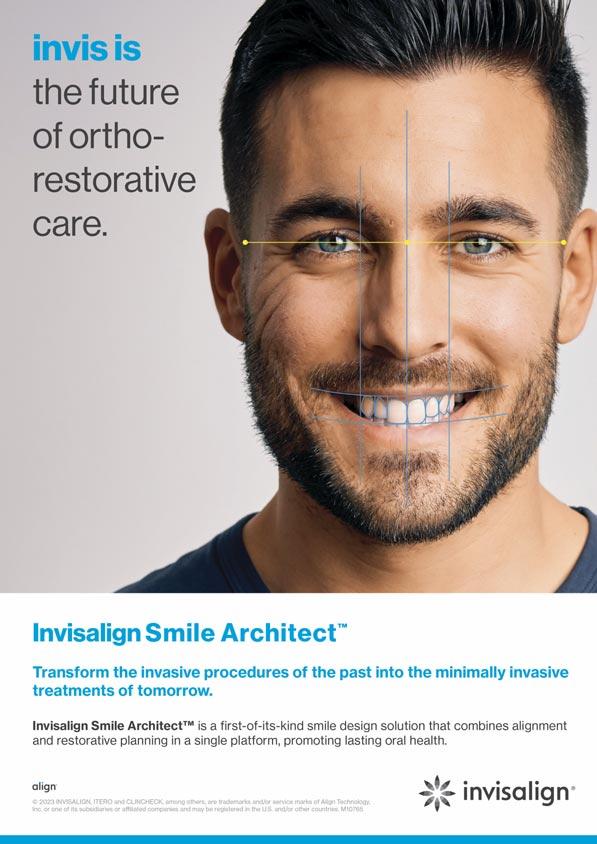
Service issues need decisions
BDA NI representatives met with Department officials this summer to discuss urgent action to address a range of issues impacting heavily on the Community Dental Service.
At the meeting, priority agenda items included progressing a Community Dental Service (CDS) workforce review, access to regional special care consultants, prioritising theatre space for the CDS, and the impact that this is having on staff morale, as well as finding remedies to a range of contractual anomalies.
Workforce issues
As we await the publication of the Skills for Health Dental Workforce Review, reference was made to a series of workshops that are planned for early autumn, including one on the CDS. Pay has emerged as an issue of concern among CDS respondents to our latest Doctors and Dentists Remuneration Body survey, with 54.5% of respondents describing pay as being unfair. The Service faces challenges ahead, with one-third of the CDS workforce planning to retire over the next five years, and almost 32% planning to reduce the hours committed to the Service. Almost 85% of respondents stated feeling unable to provide an adequate service to patients in the current working climate. Following these results, we made the case that it is vital for the Service that we move forward with the CDS component of the workforce review as soon as possible.
Regional special care consultants
Two part-time (0.8 WTE) special care consultant posts have recently been advertised for Belfast Health and Social Care Trust. We have repeated the need for the CDS to have access to regional special care consultants at a time when many practitioners are feeling pushed to the absolute limit. Data for Northern Ireland shows that a minimum of between two and three regional consultants in special care dentistry are needed to service the population. We reiterated that there needs to be a clear plan in place to ensure that the CDS can gain access to regional, consultant-led special care. Recent figures show that the number of specialists in special care dentistry has now reduced from 17 to 13, exacerbated by most individuals reducing hours and many approaching retirement.
Contractual anomalies
During the meeting, concerns were also raised regarding the lack of a regrading process and the fact that this is not included in the terms and conditions of the CDS contract. The split posts anomaly, which only exists in Northern Ireland, was also discussed.
This anomaly typically occurs in situations where an individual is assigned to a split post, which involves carrying out duties as both a dental officer (DO) and a senior dental officer (SDO). The problem arises when the dental practitioner is expected to perform the responsibilities and duties of an SDO or DO on specified days, but an issue only an SDO can deal with occurs on a DO day instead.
This misalignment can create significant challenges and frustrations for dentists who either must choose between carrying out the work on DO pay, or make the morally difficult decision to refuse. A resolution is required that ends the worst excesses of this, establishing a system that accurately recognises and compensates dental practitioners, ensuring fairness and equity.
Training budgets
The meeting also saw discussion and proposals around training budgets, which cannot be carried forward from one year to the next. One proposal brought forward is that there would not be a running total of spend against the training budget for each dentist per year to allow for the fact that a dentist may do a lot of training one year, and very little the next.
There was a request to make it clear that the training budget is only to be used for CDS dentists to address training needs as identified via the appraisal process and not for mandatory training. Following this, there was a commitment to look at how training budget allowances could be uplifted annually so as not to be devalued.
We have provided the Department of Health with a clear picture of the range of pressures impacting the CDS workforce, and what needs to be done to prioritise staff, and the Service.

It is vital that we move forward with the Community Dental Service component of the workforce review as soon as possible.
DIRECTOR’S MESSAGE
175 Journal of the Irish Dental Association | August/September 2023: Vol 69 (4)
Tristen Kelso Director, BDA Northern Ireland








 Dr Cristiane da Mata Honorary Editor
Dr Cristiane da Mata Honorary Editor











 Fintan Hourihan IDA CEO
Fintan Hourihan IDA CEO





















































